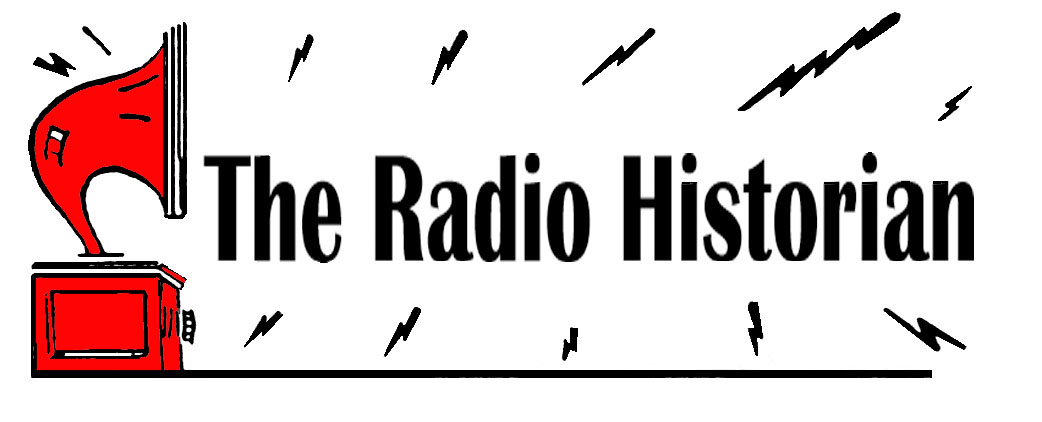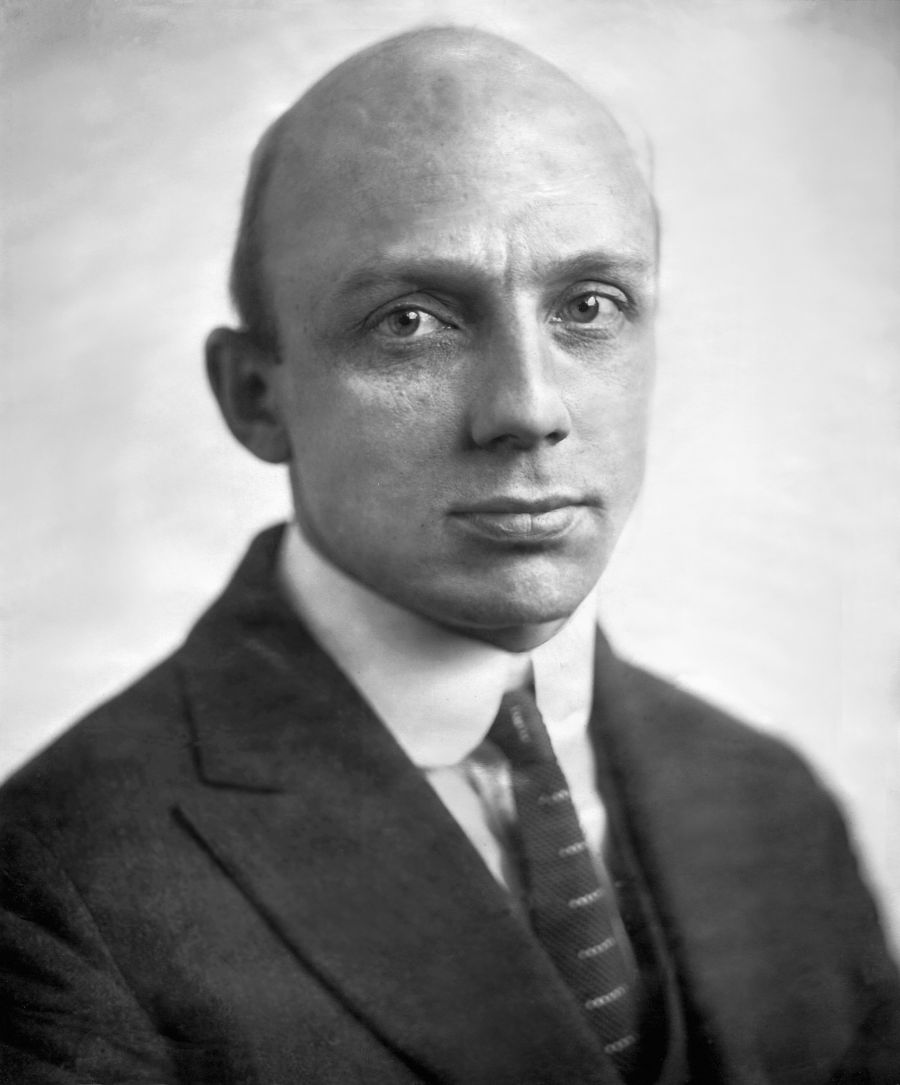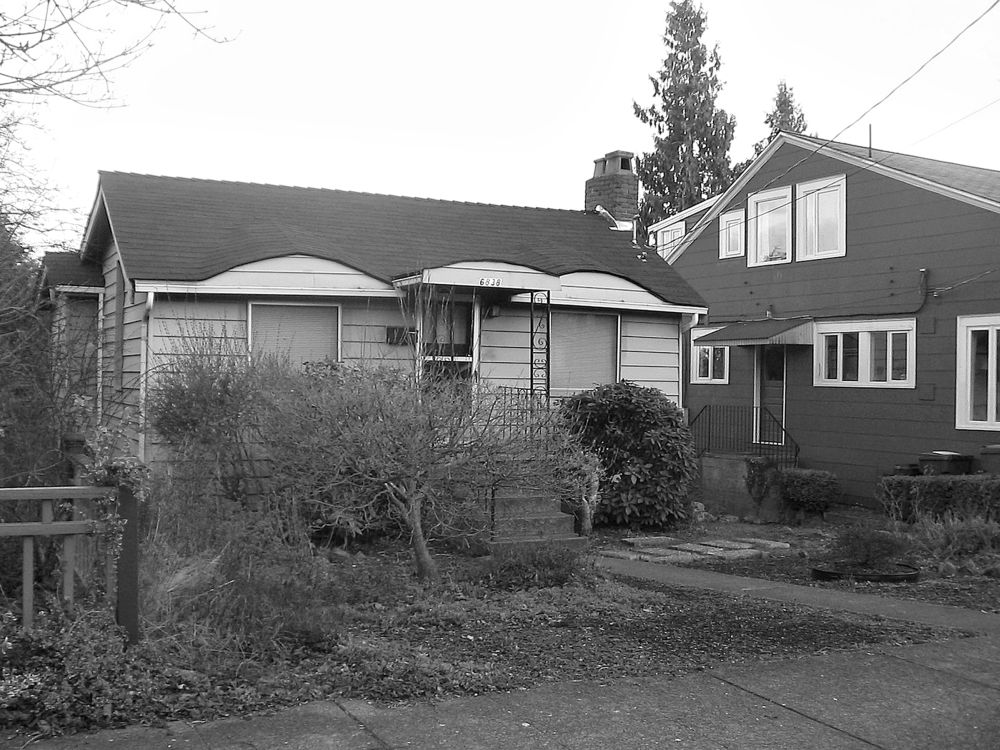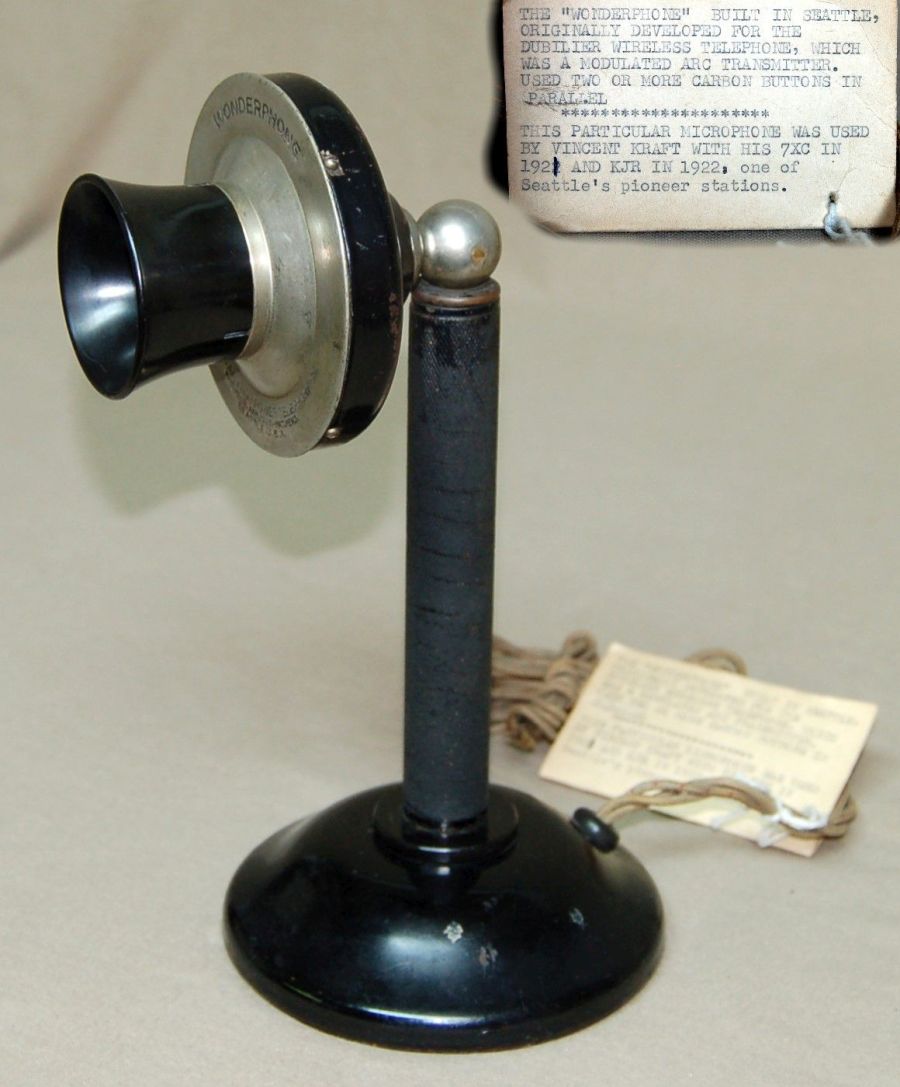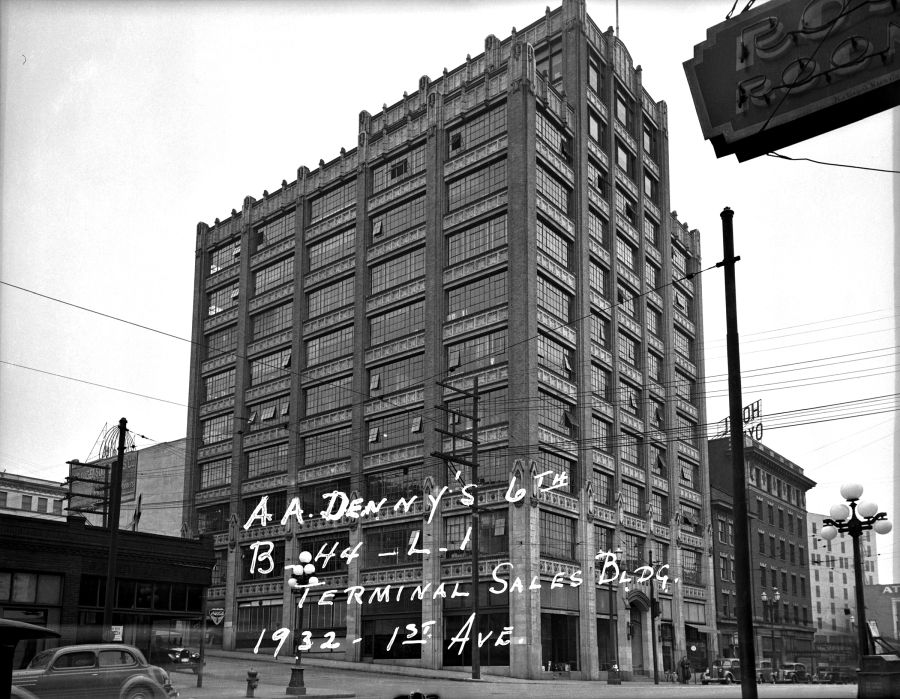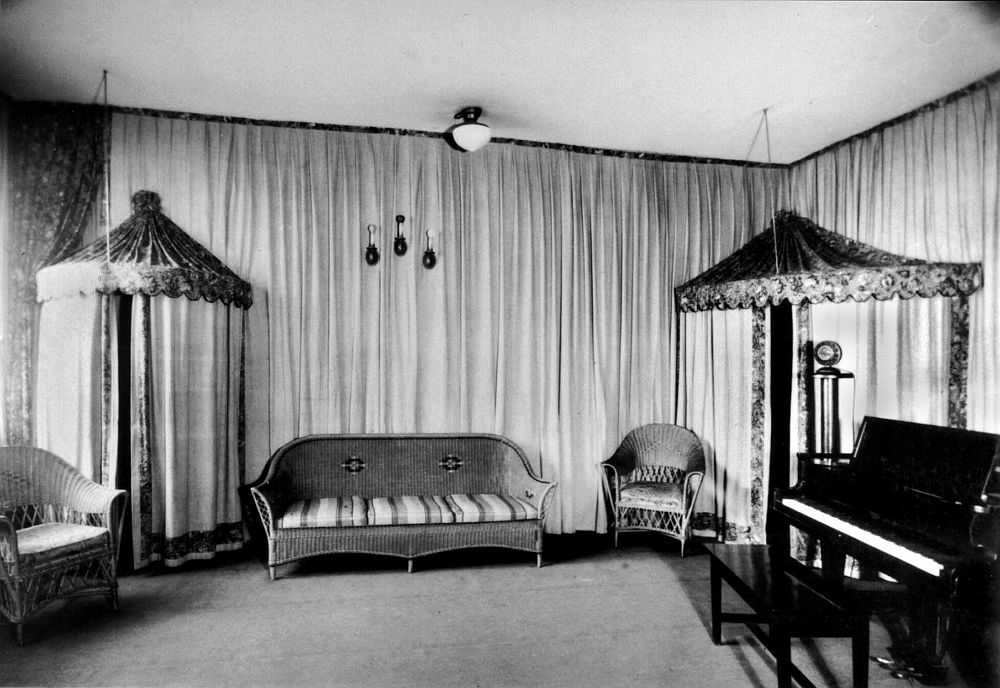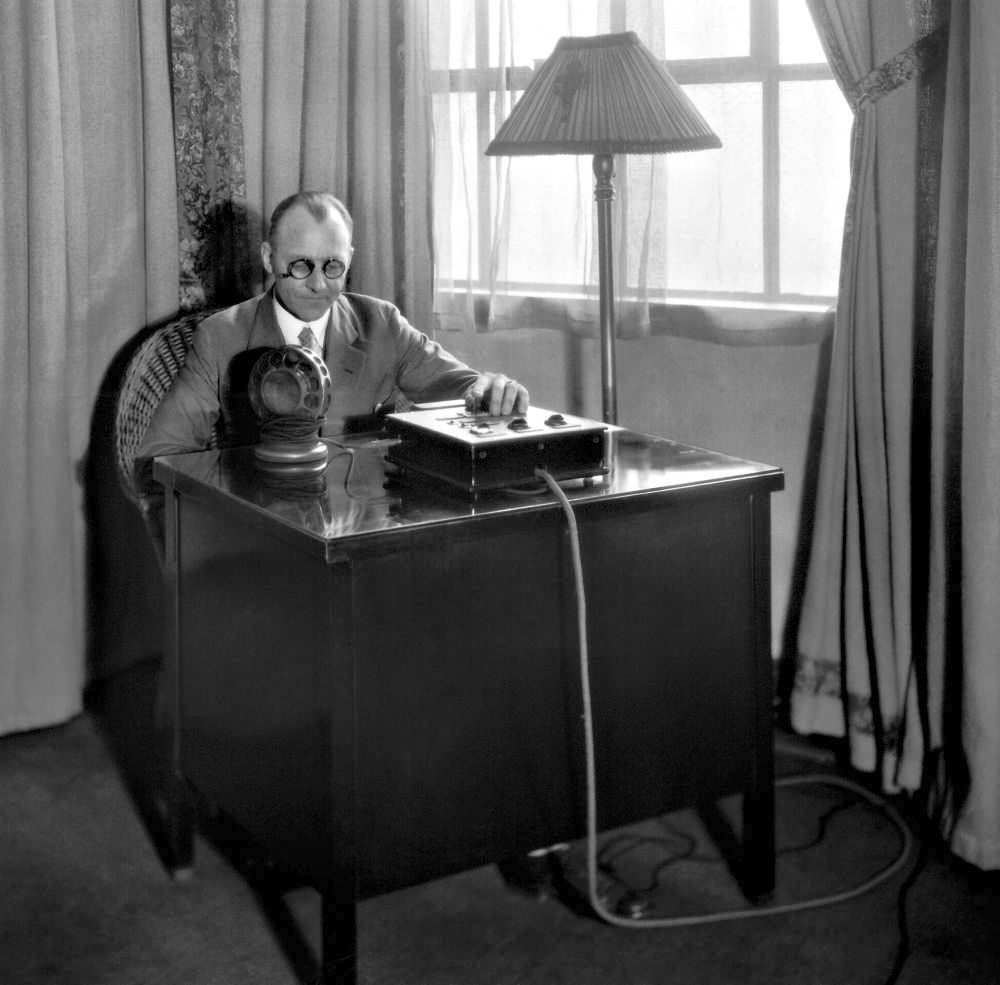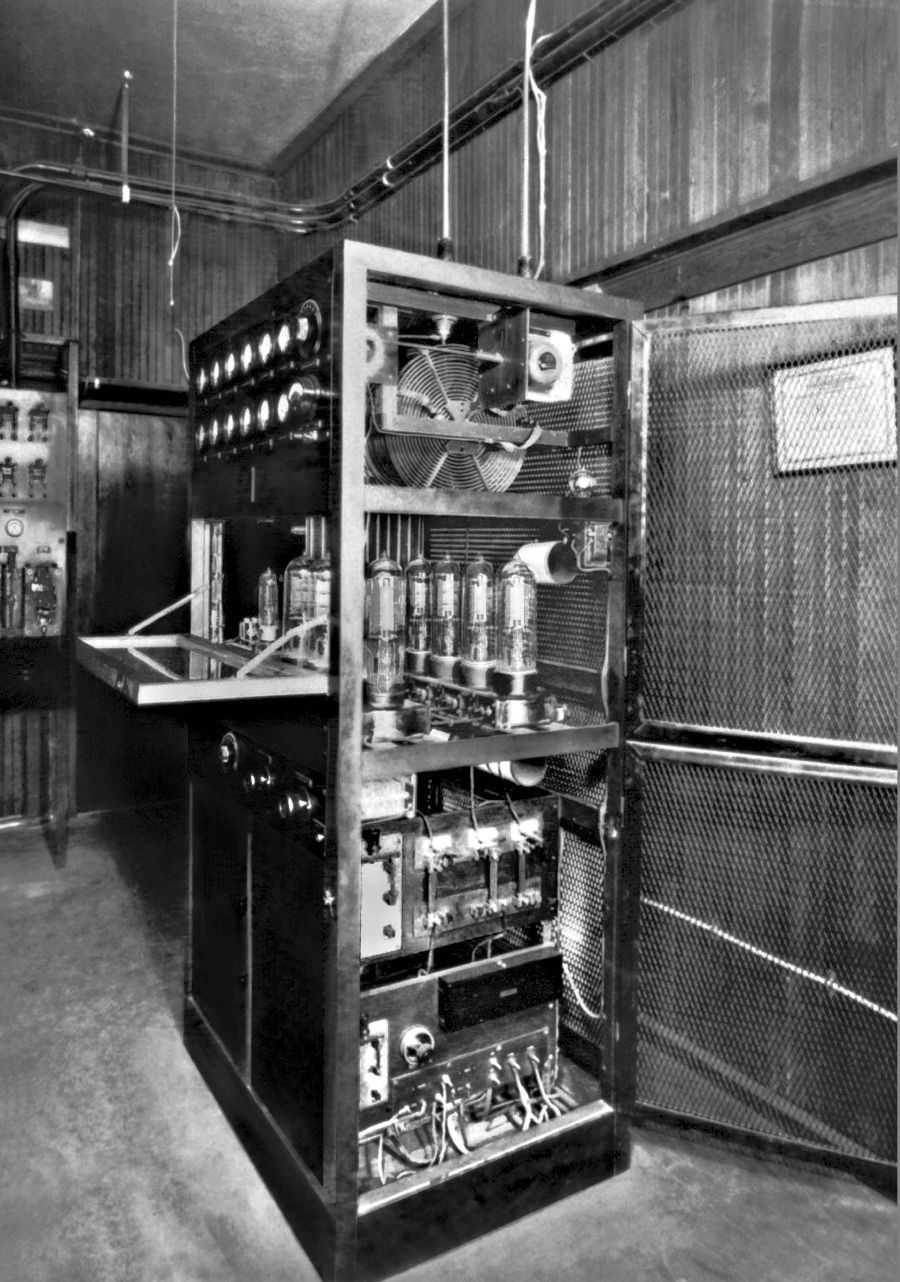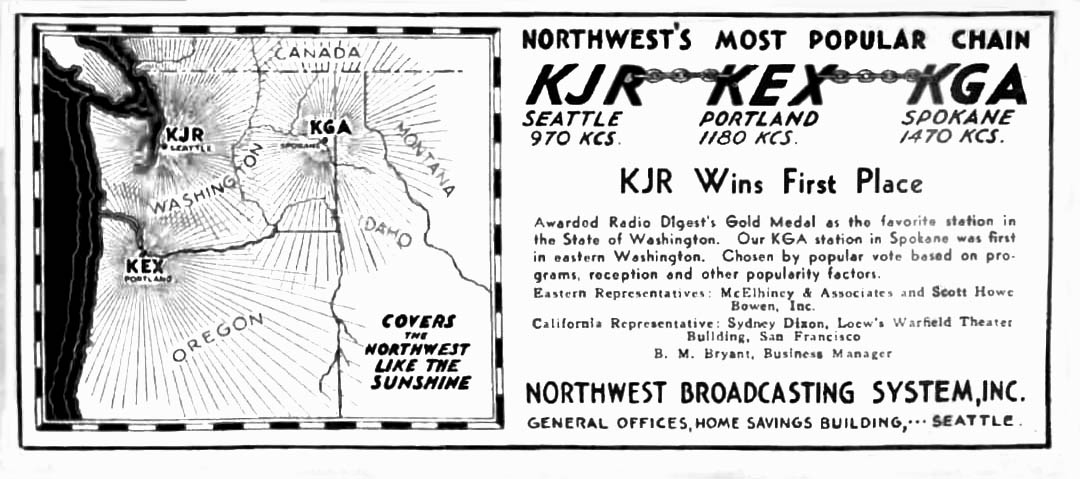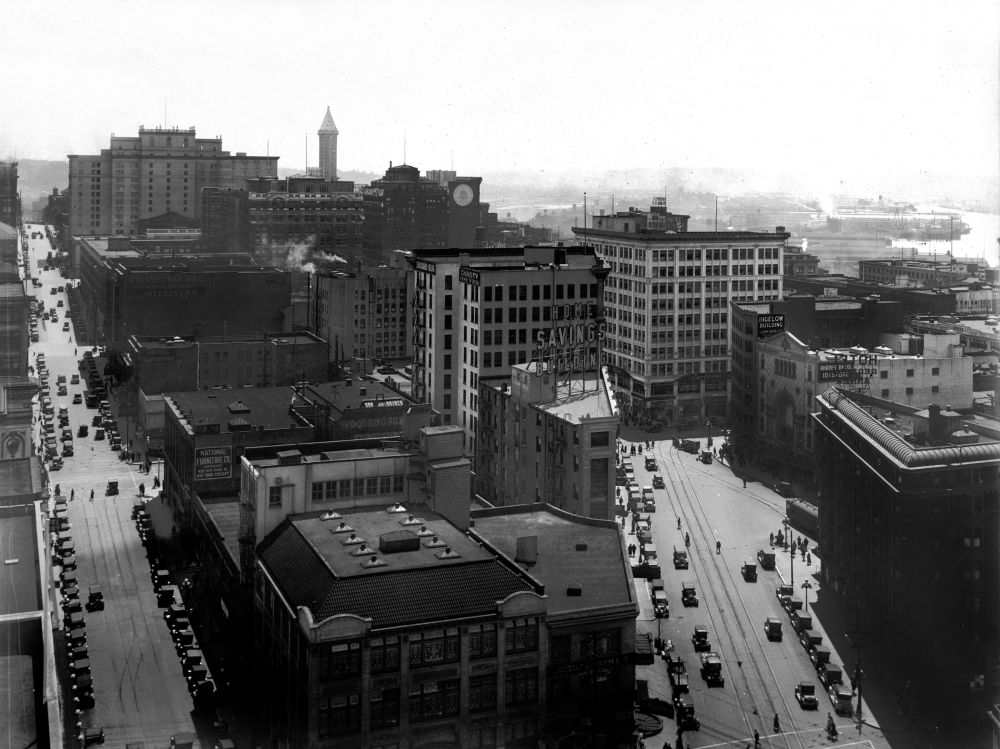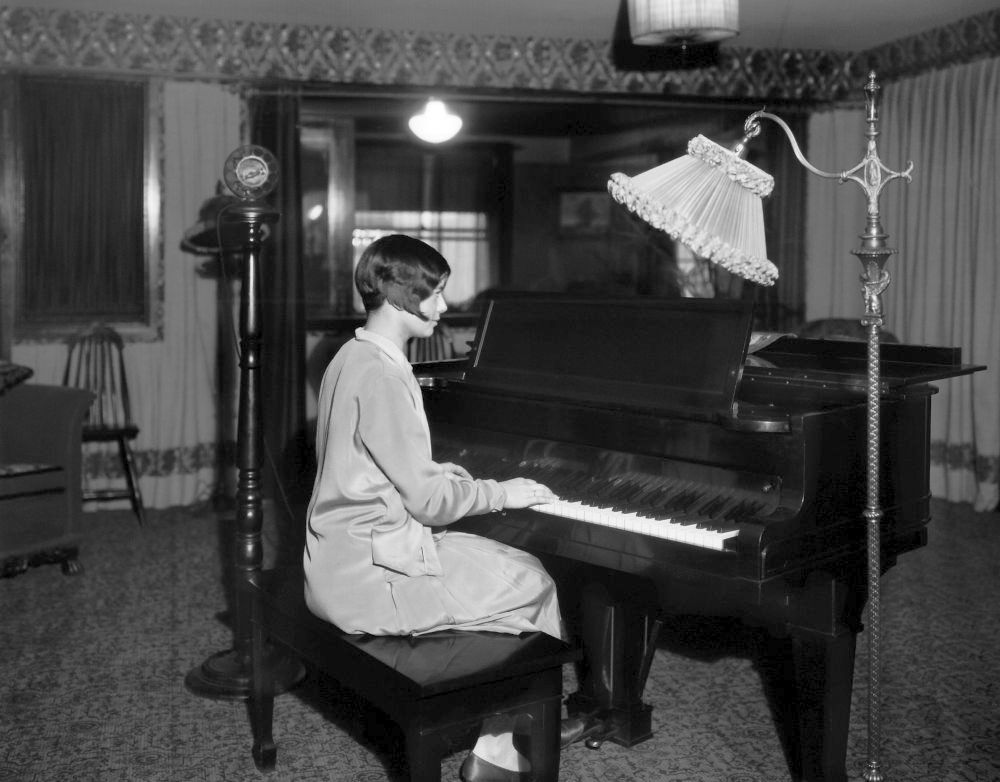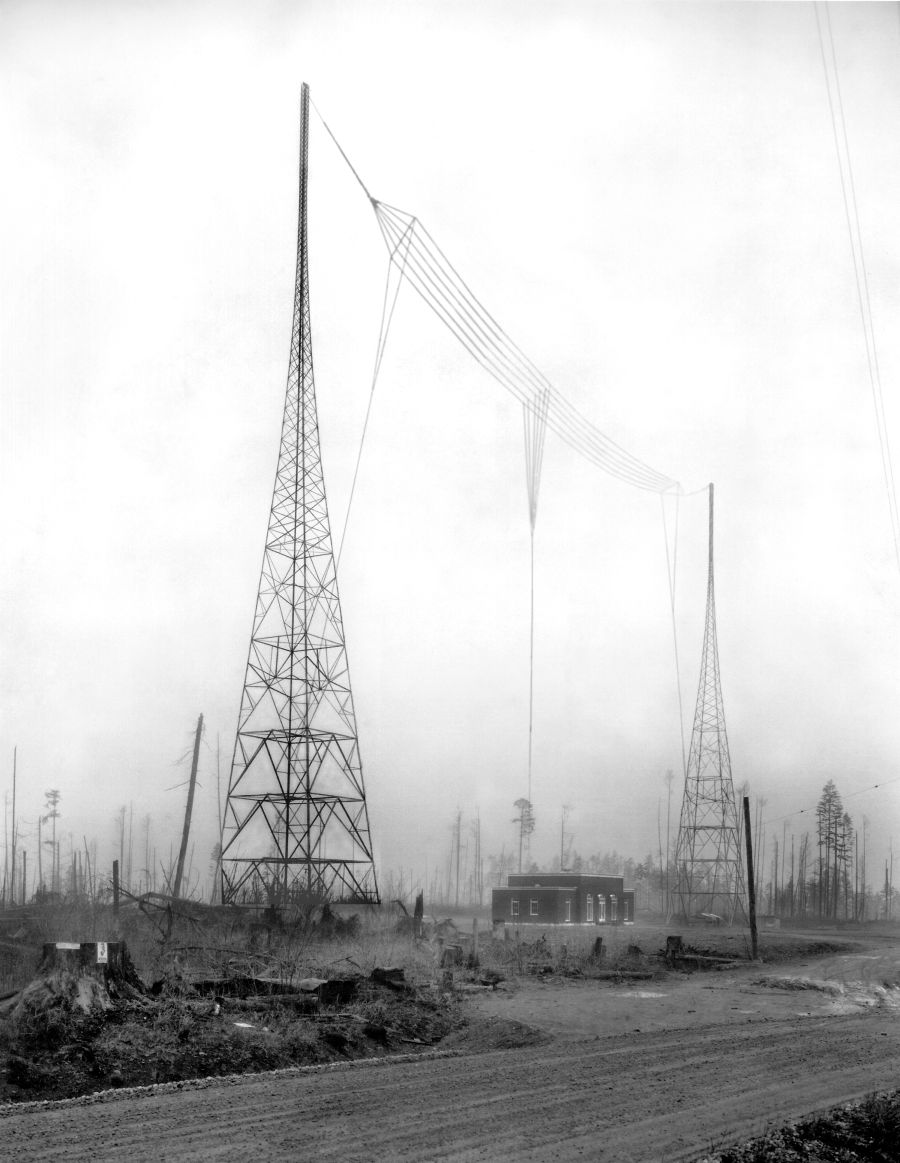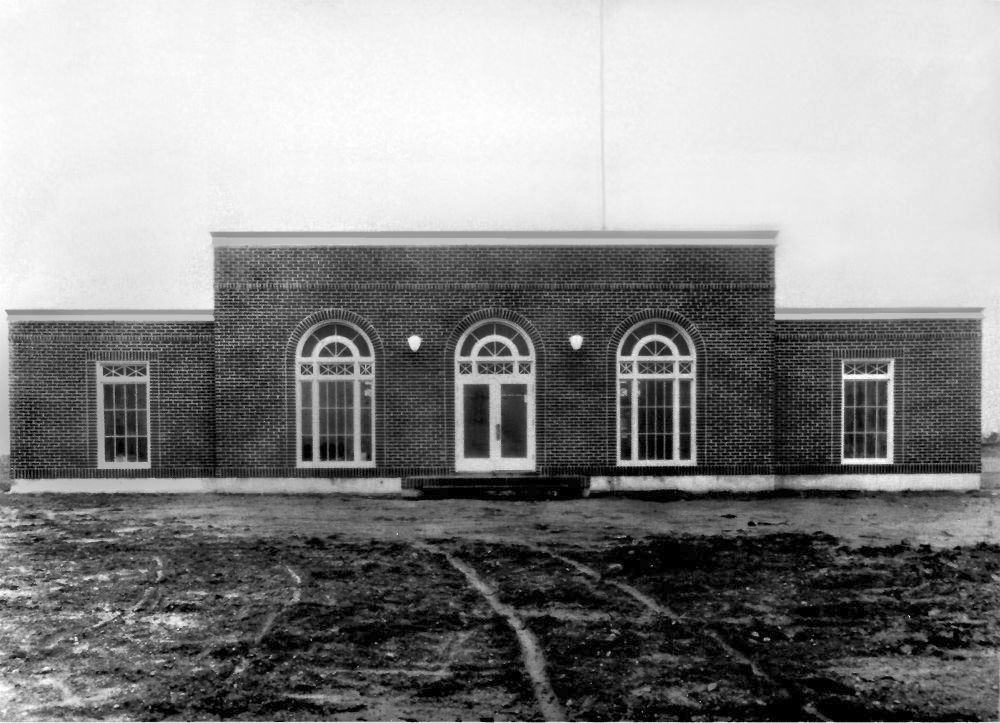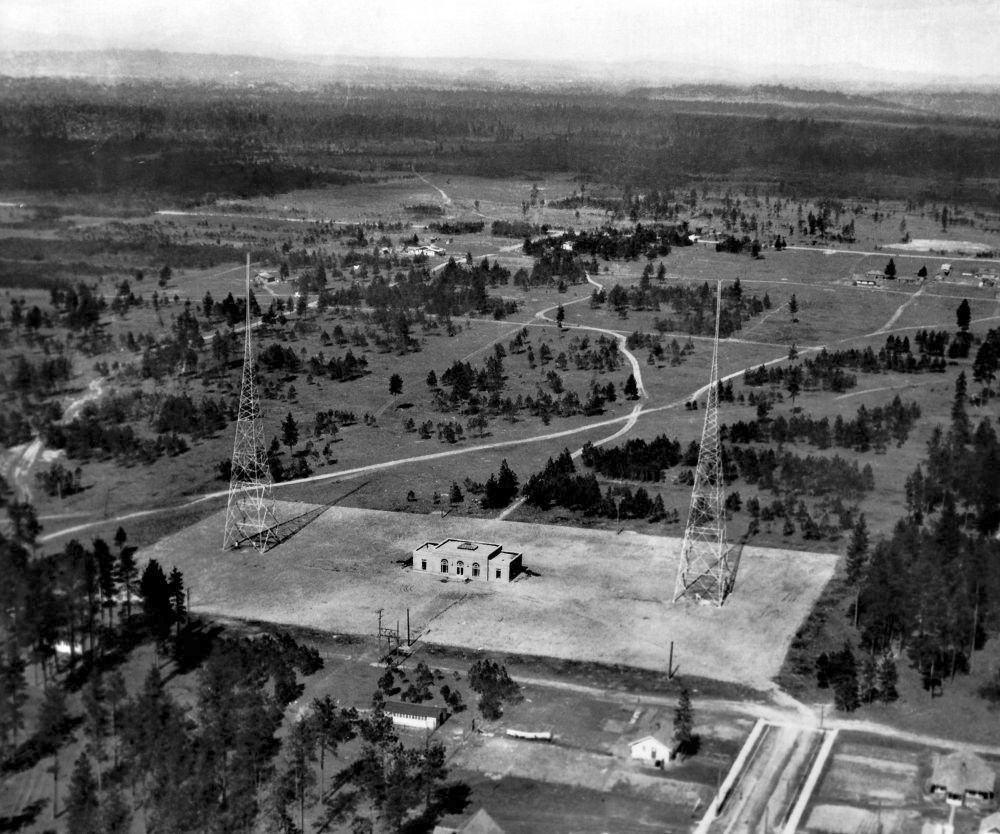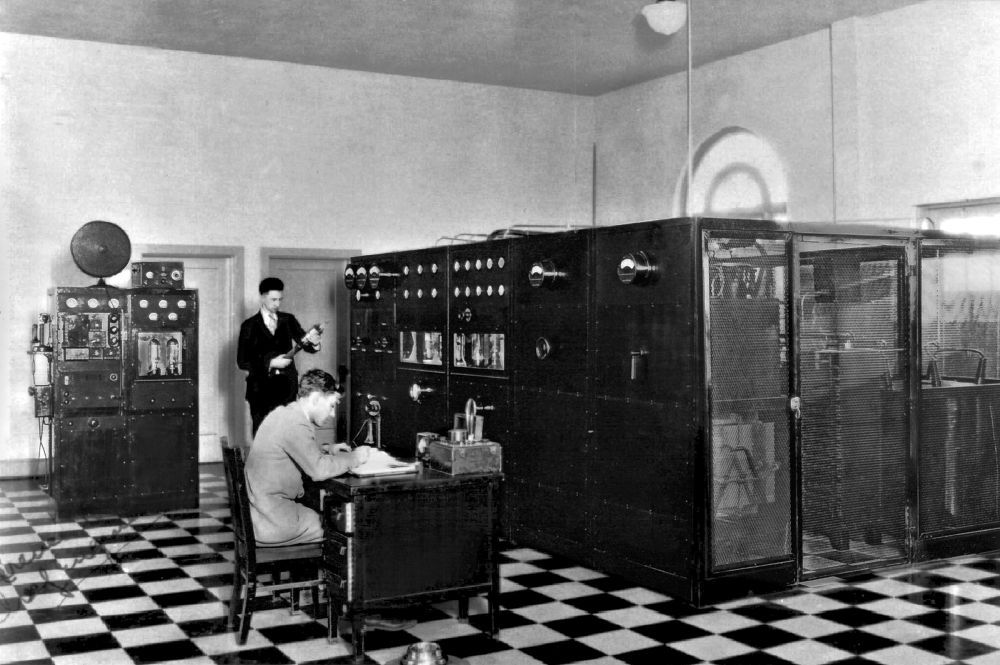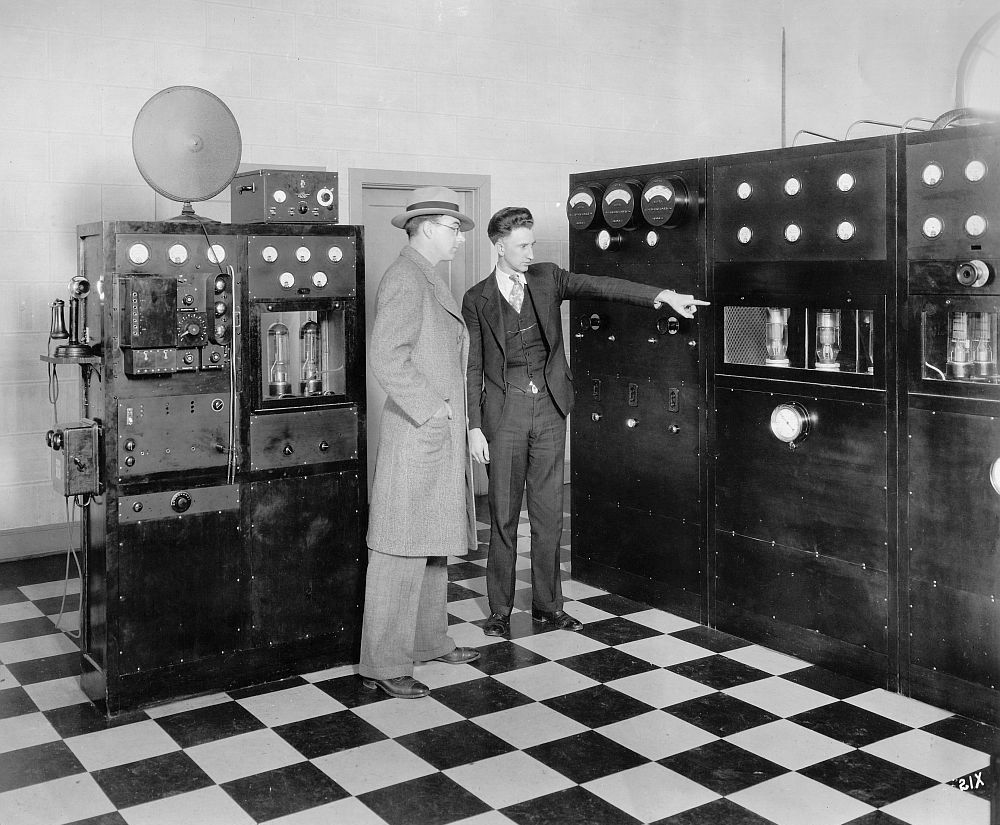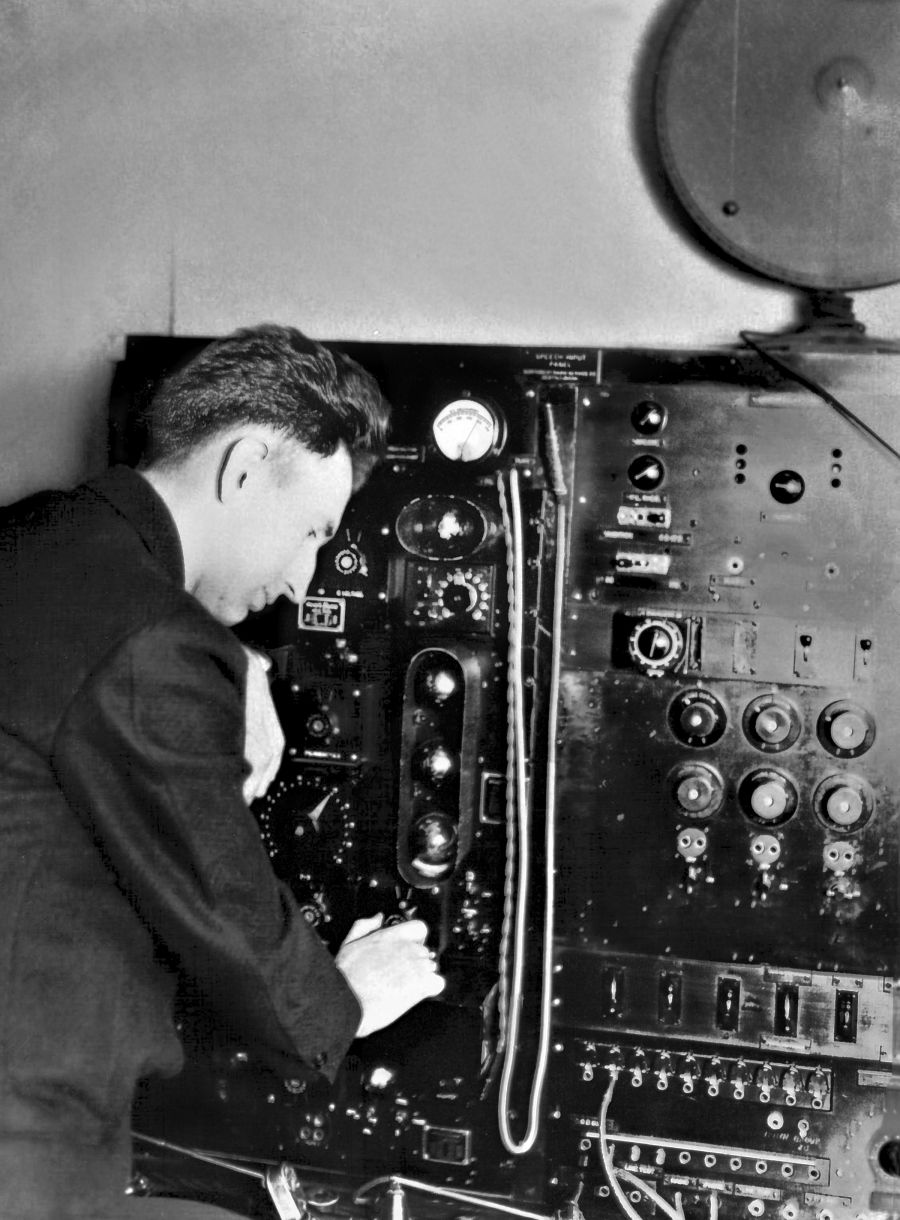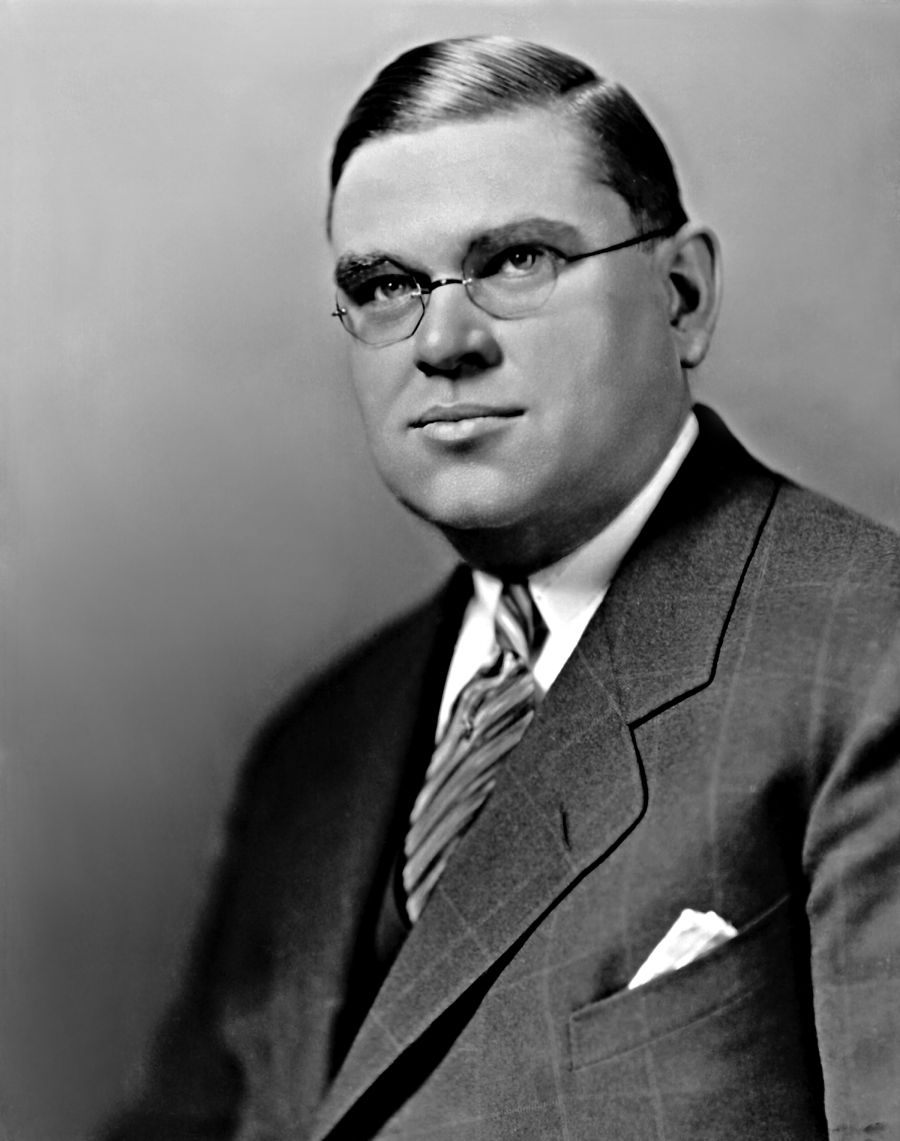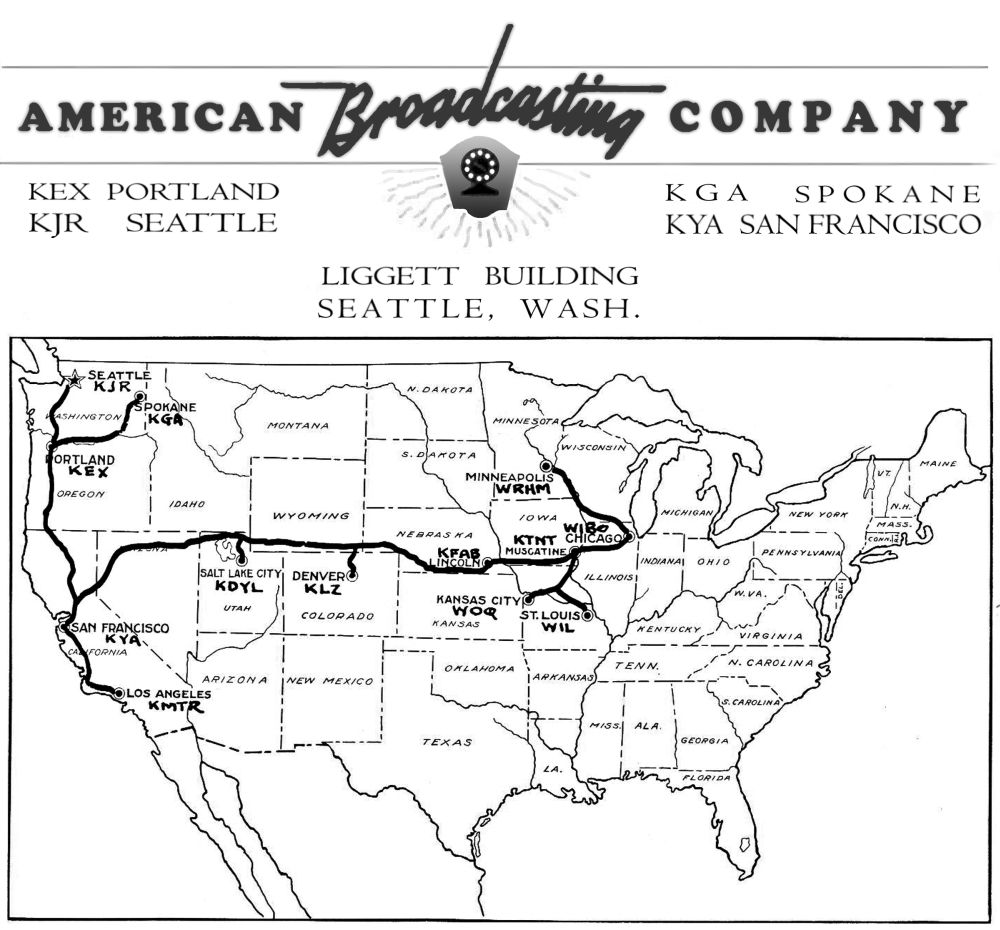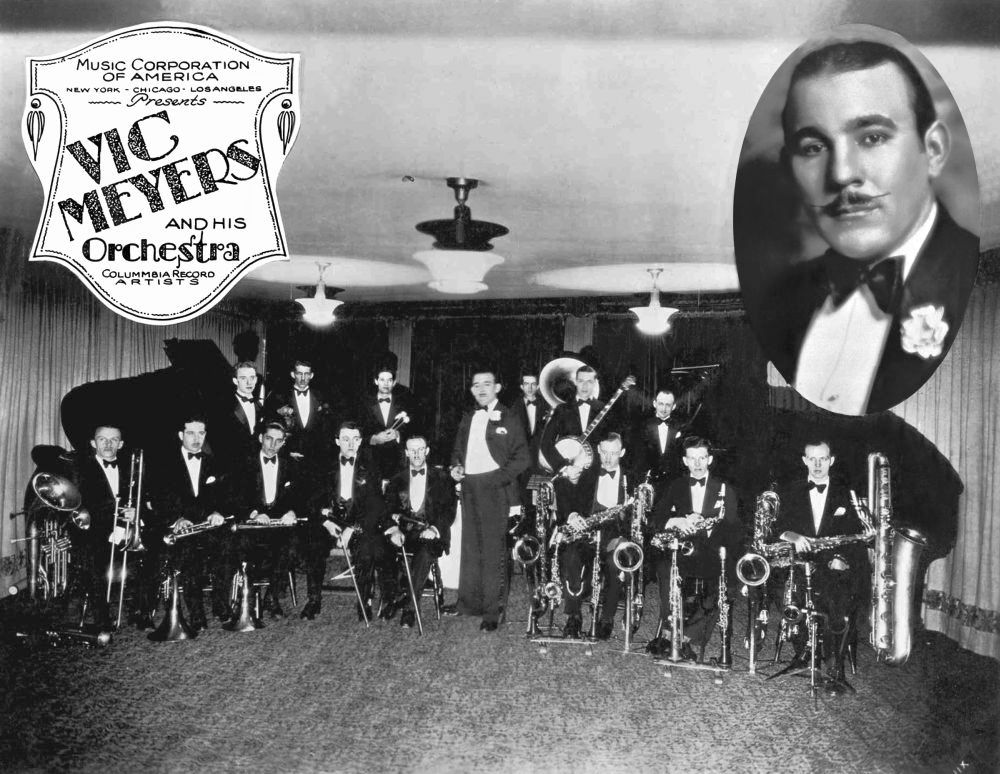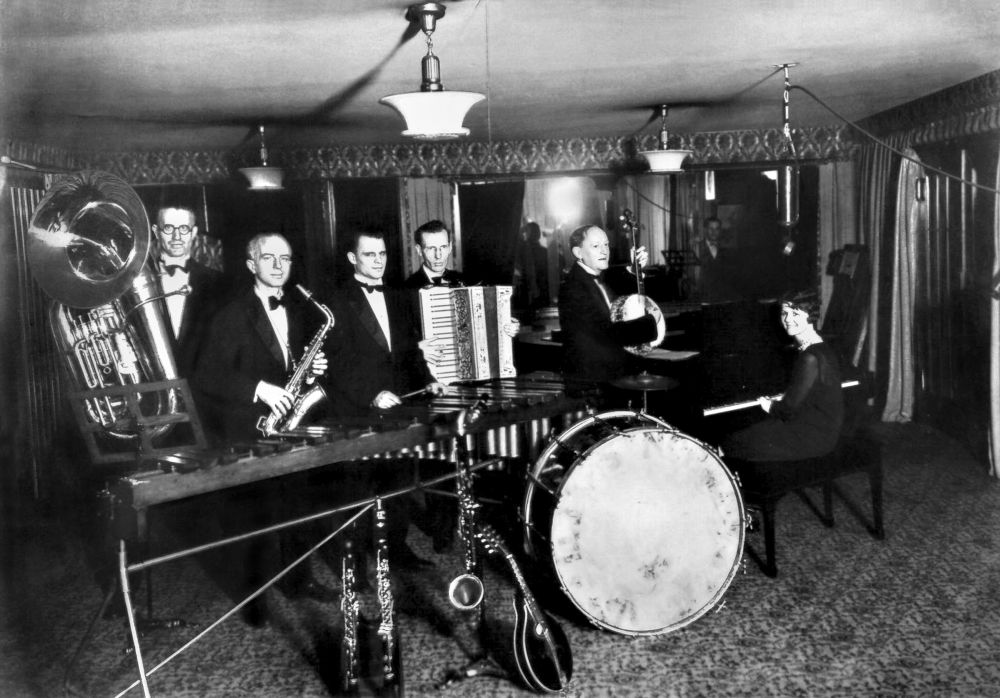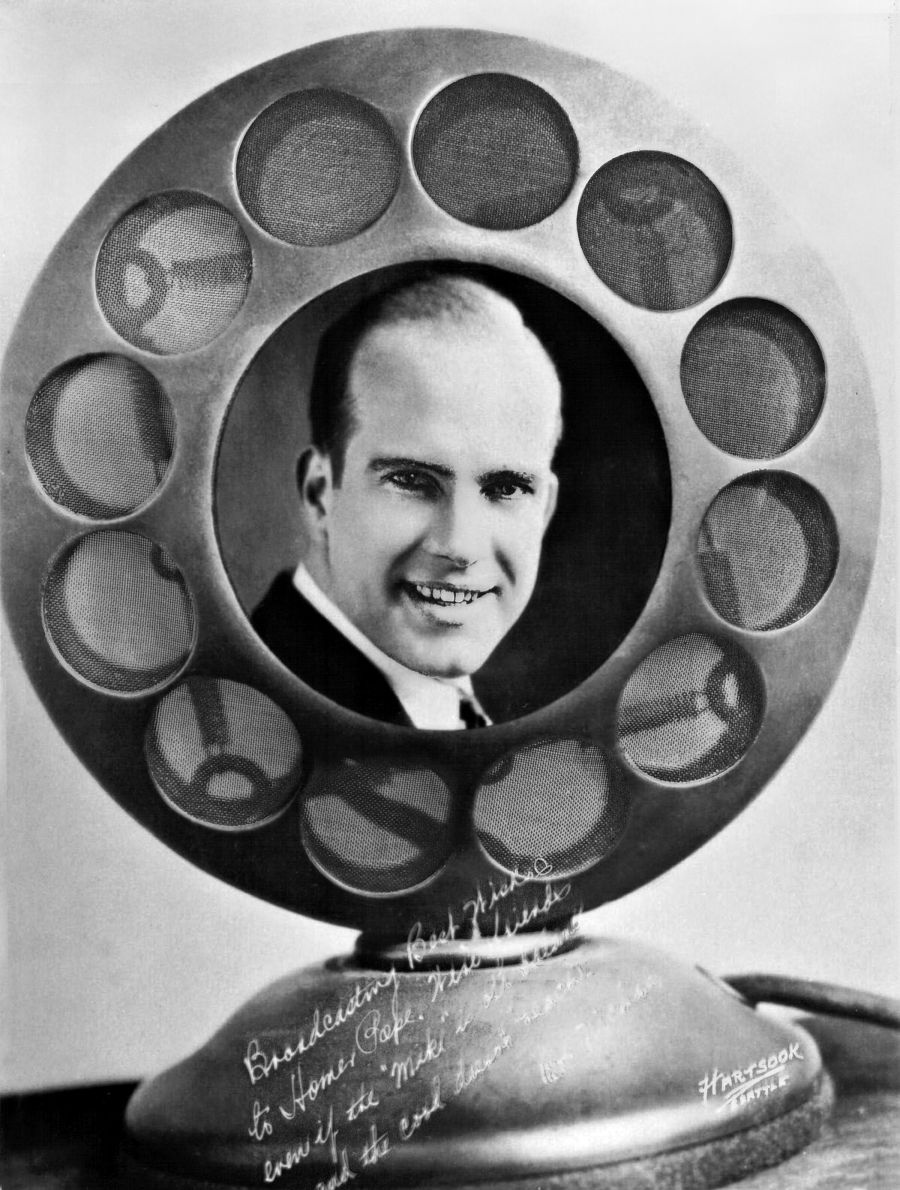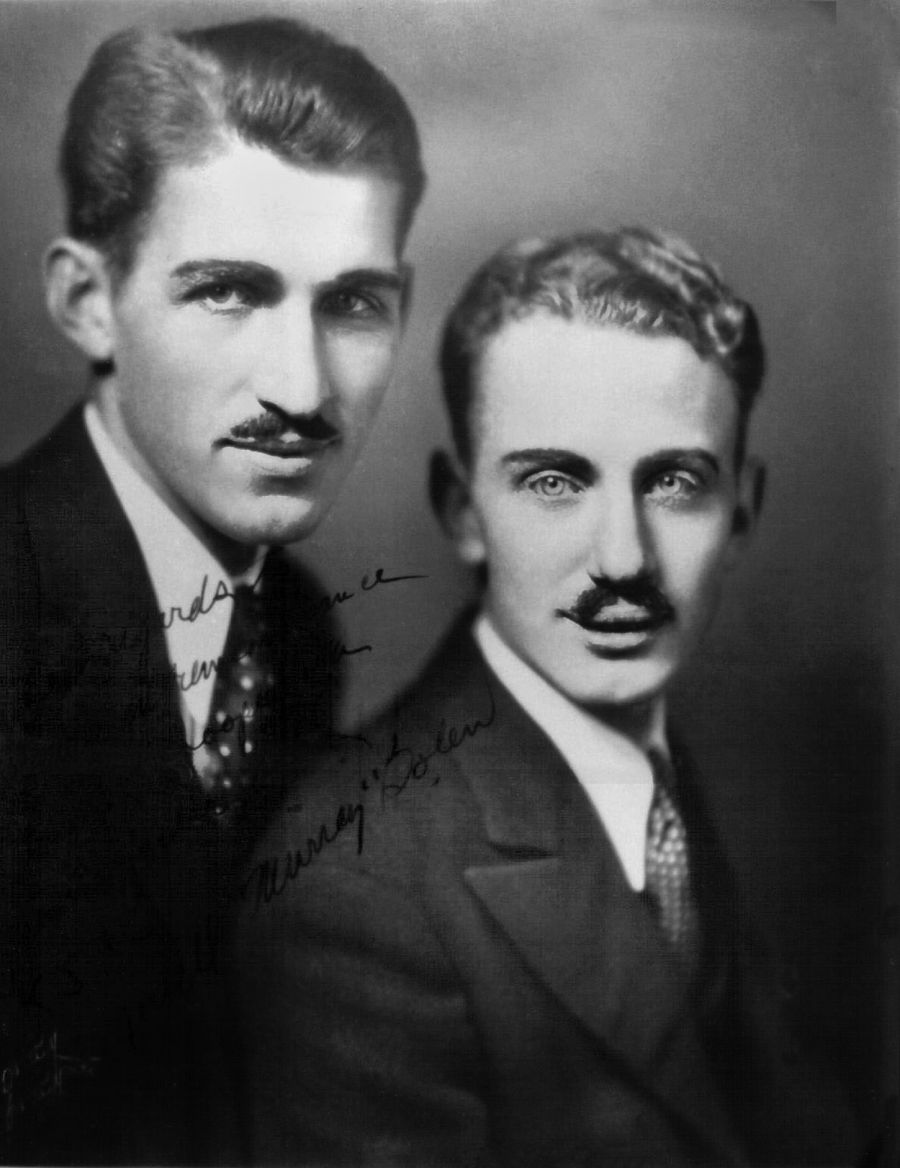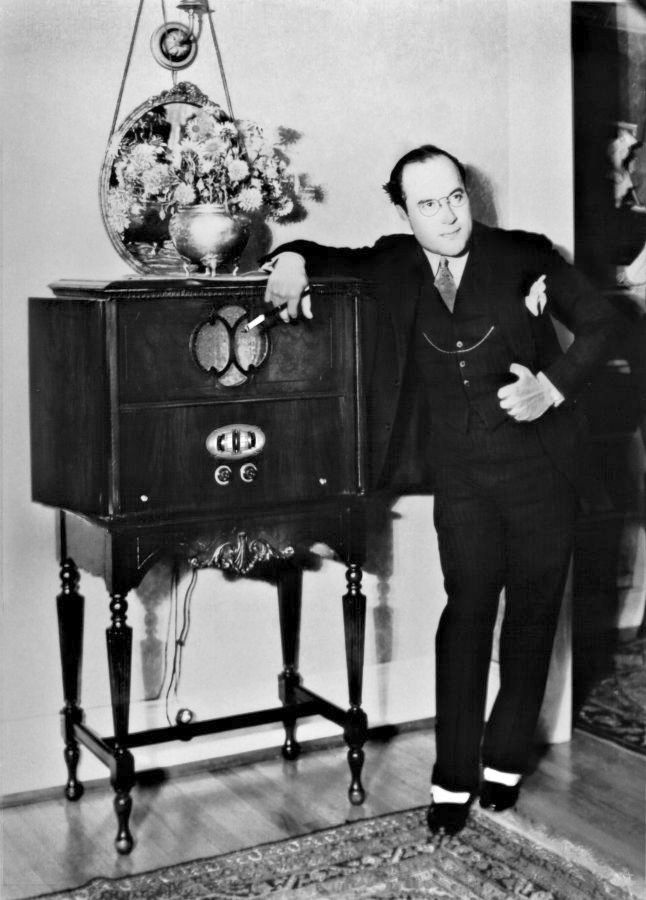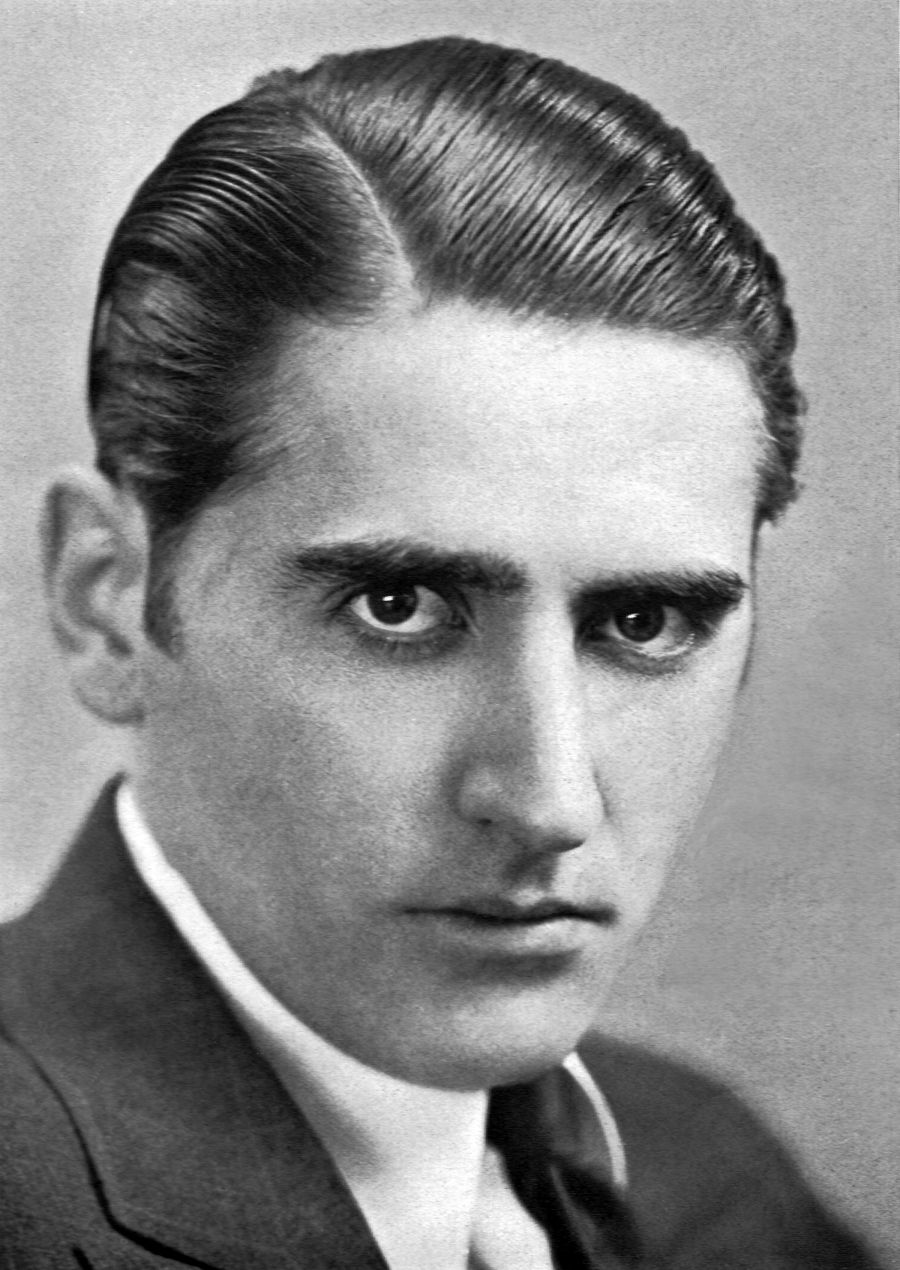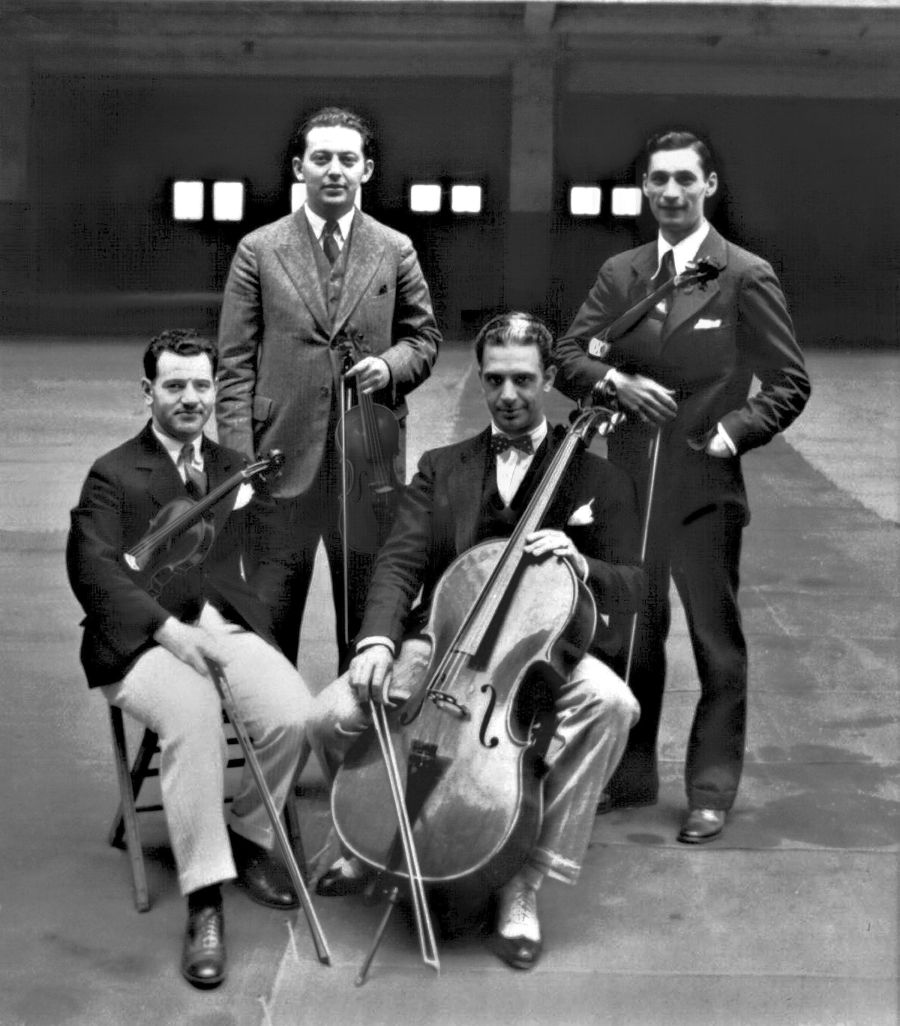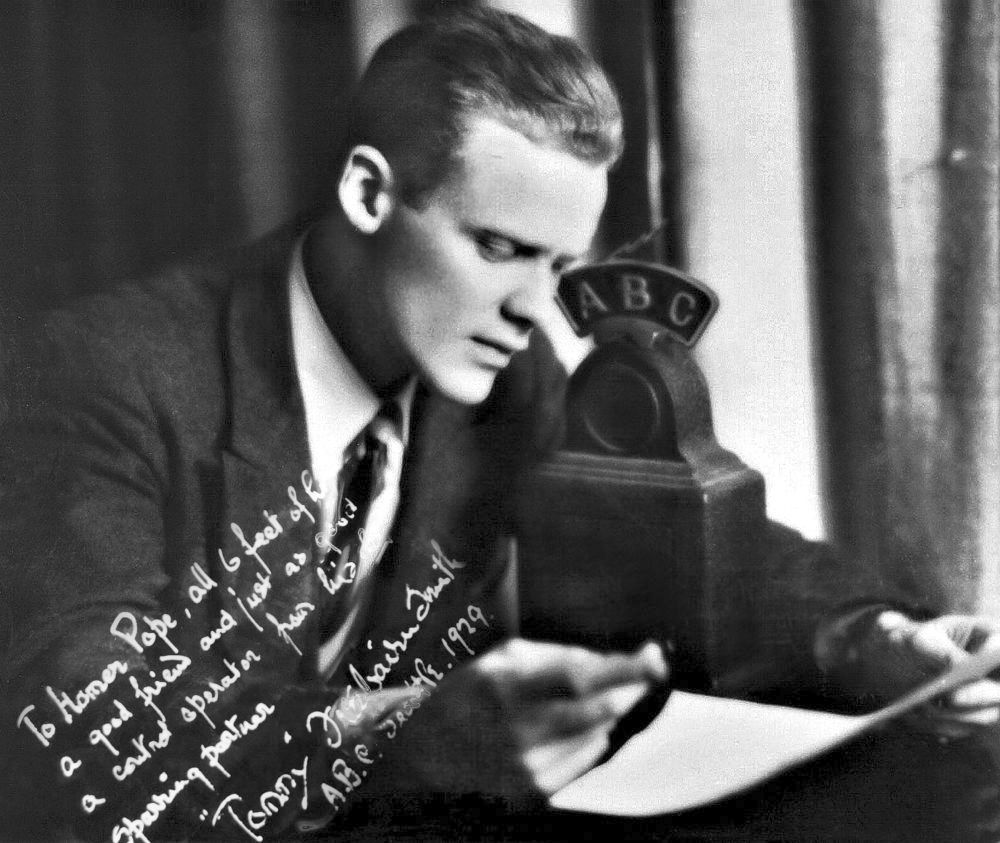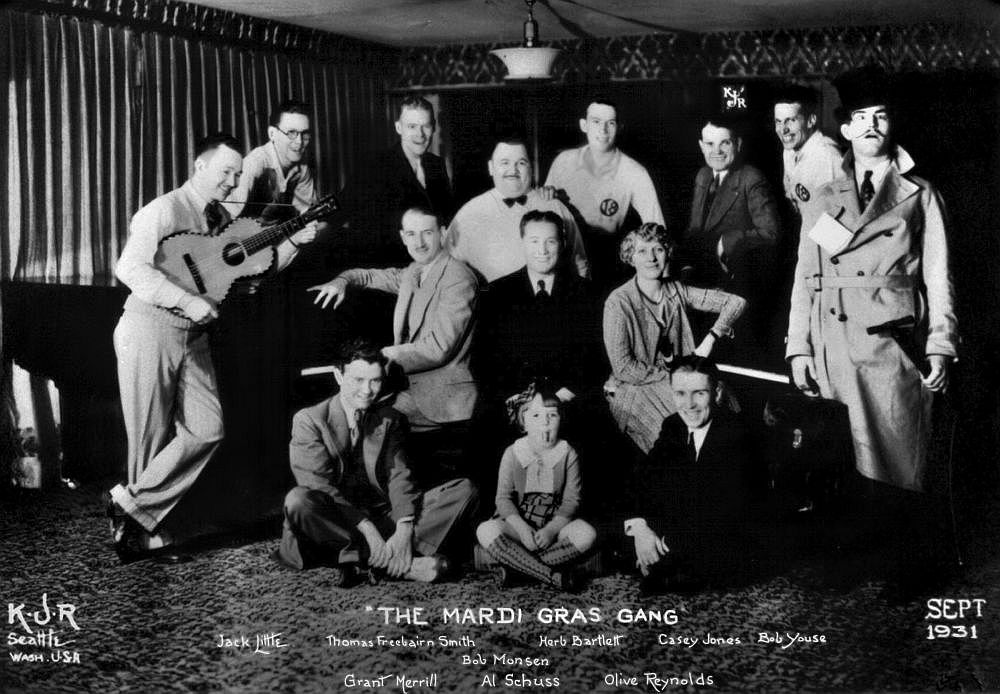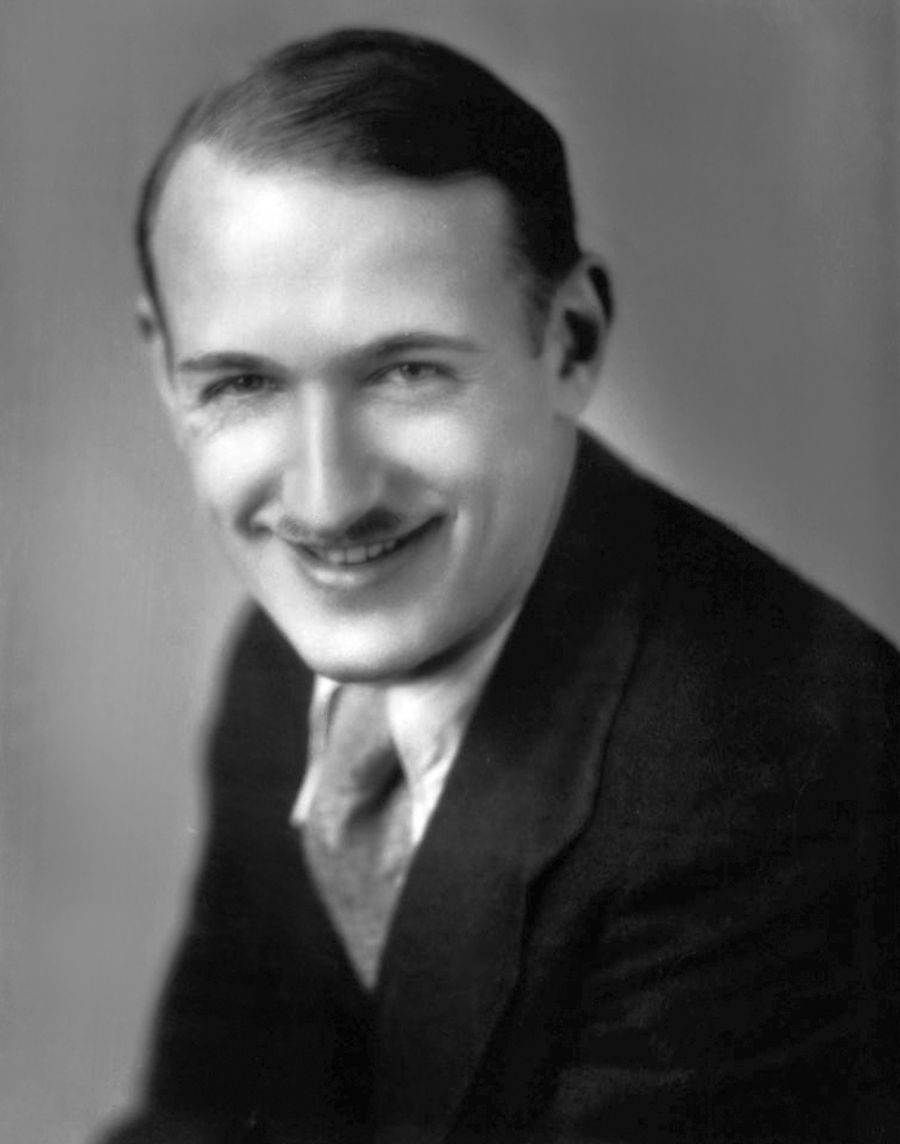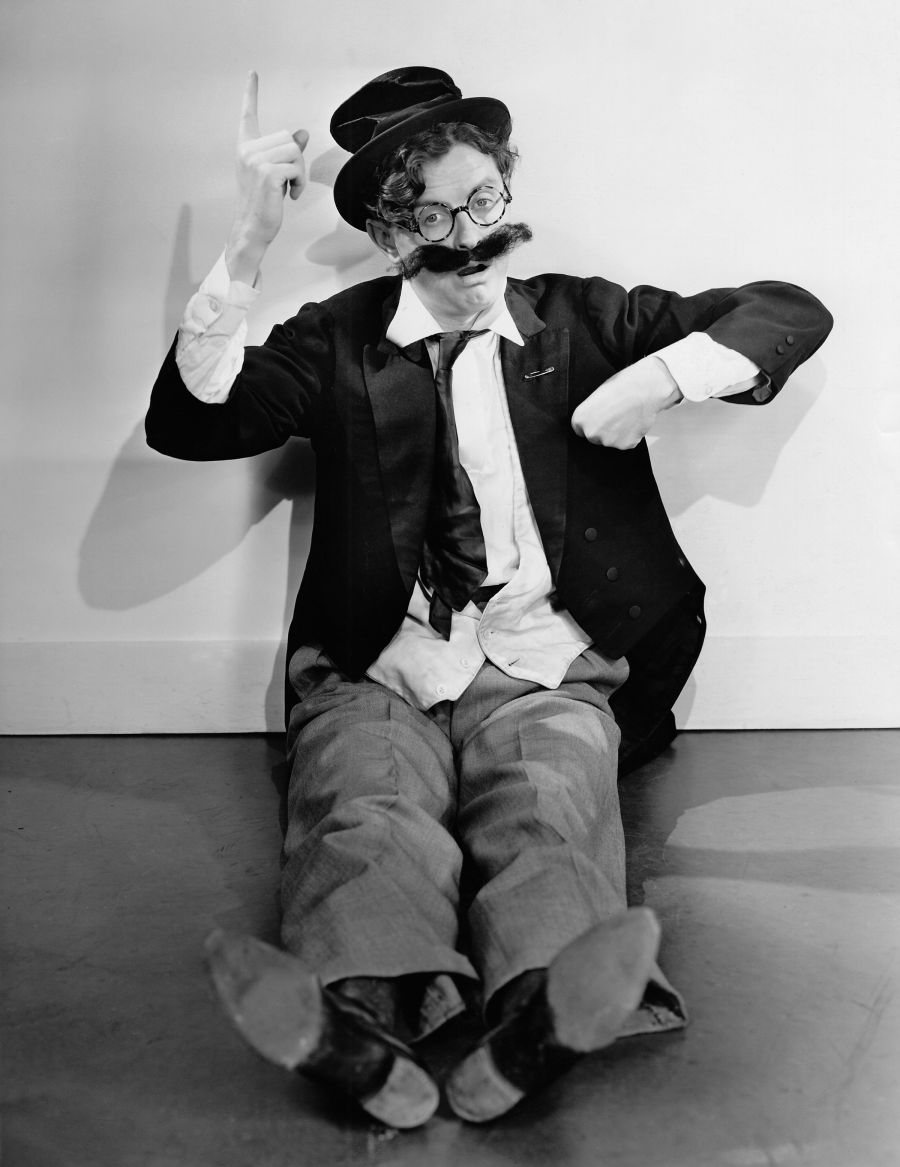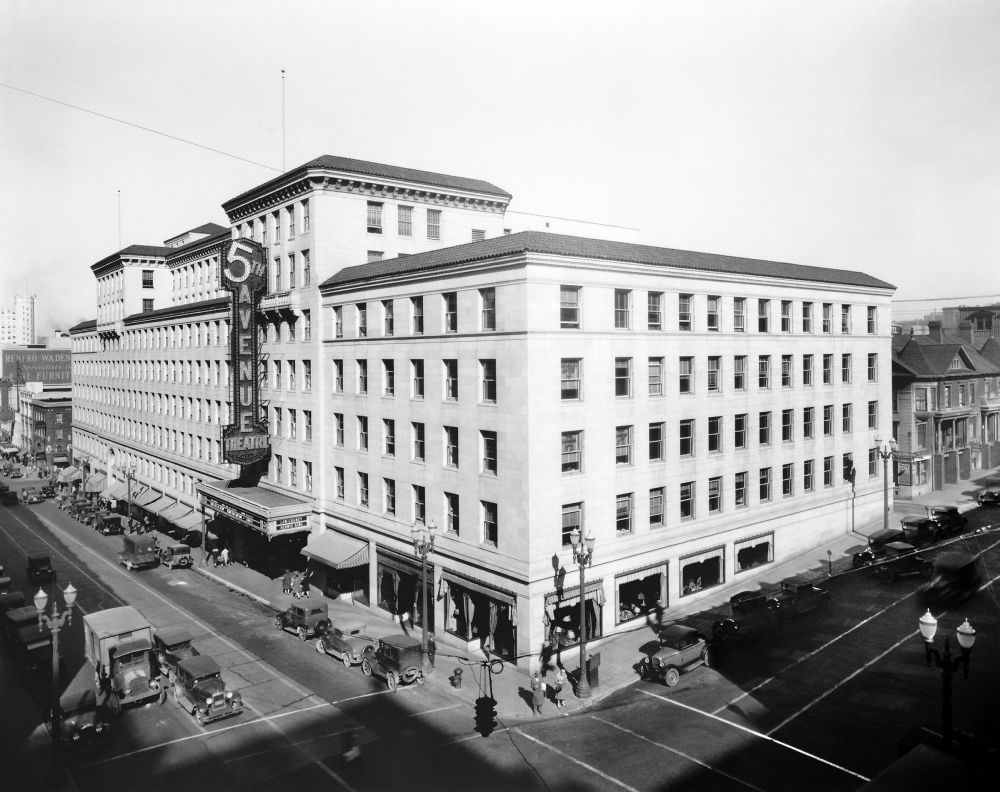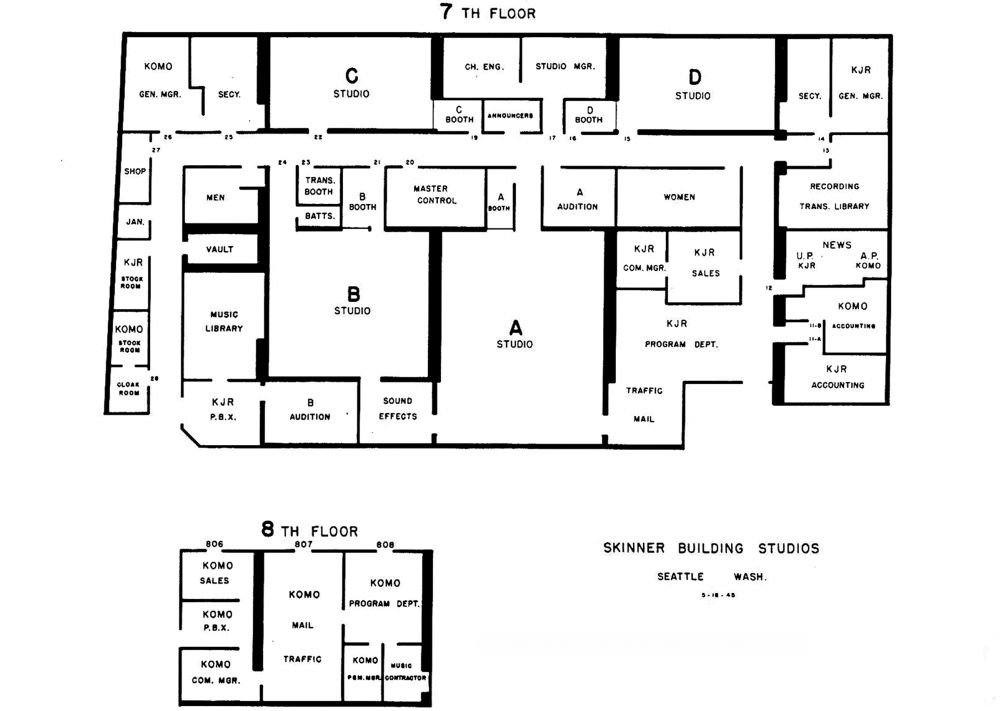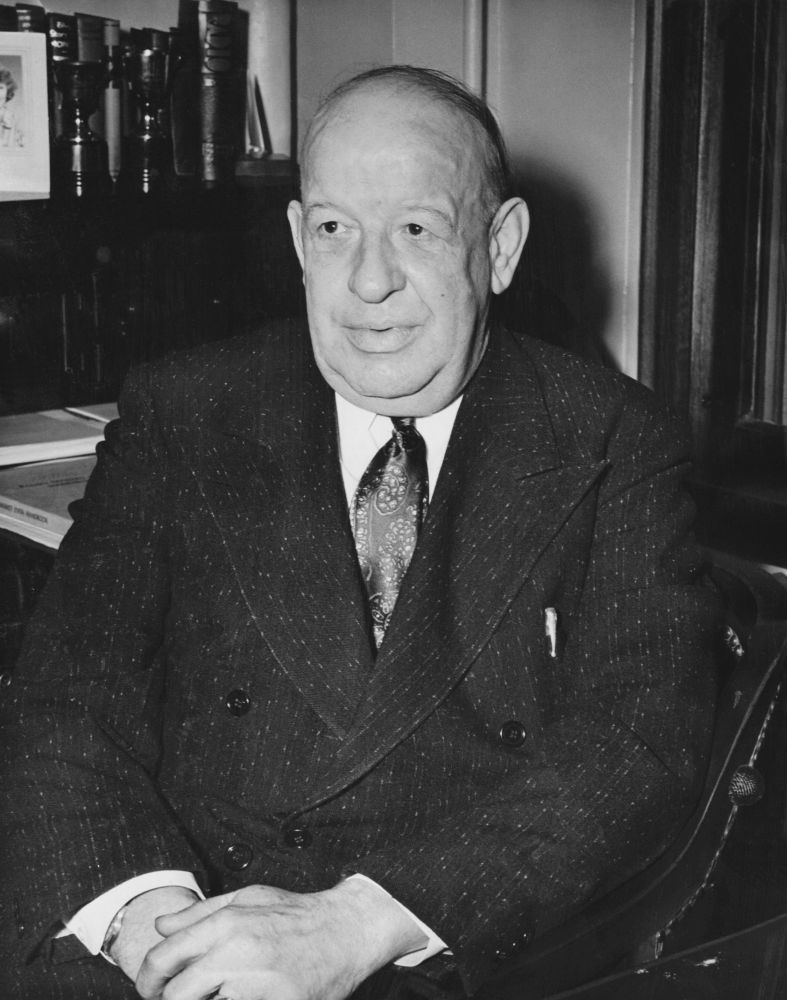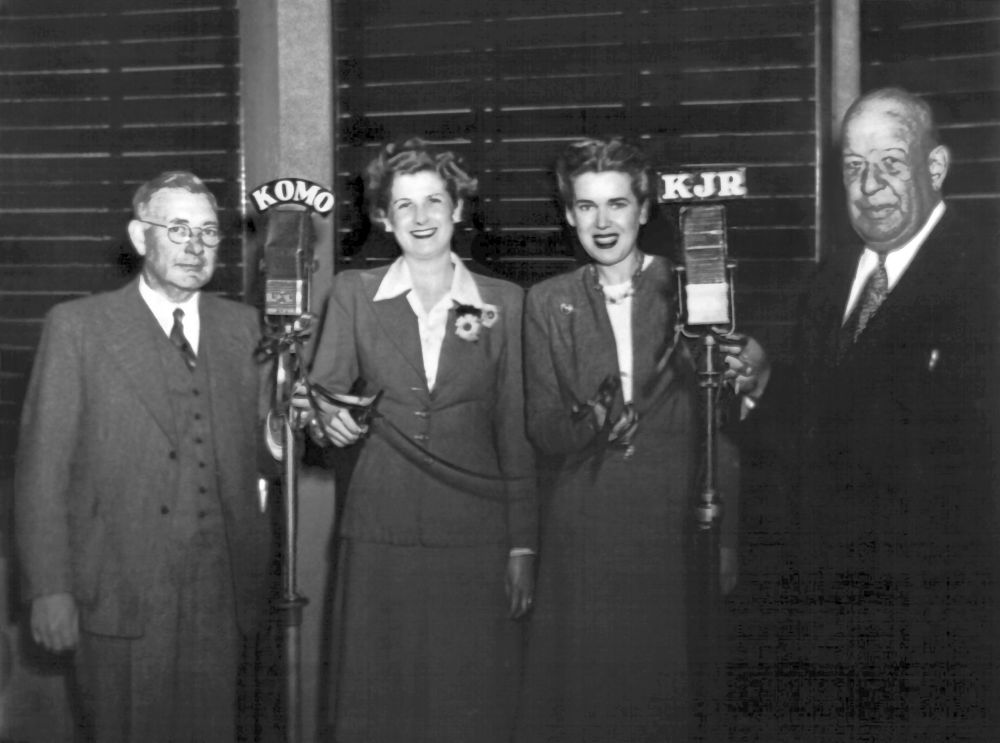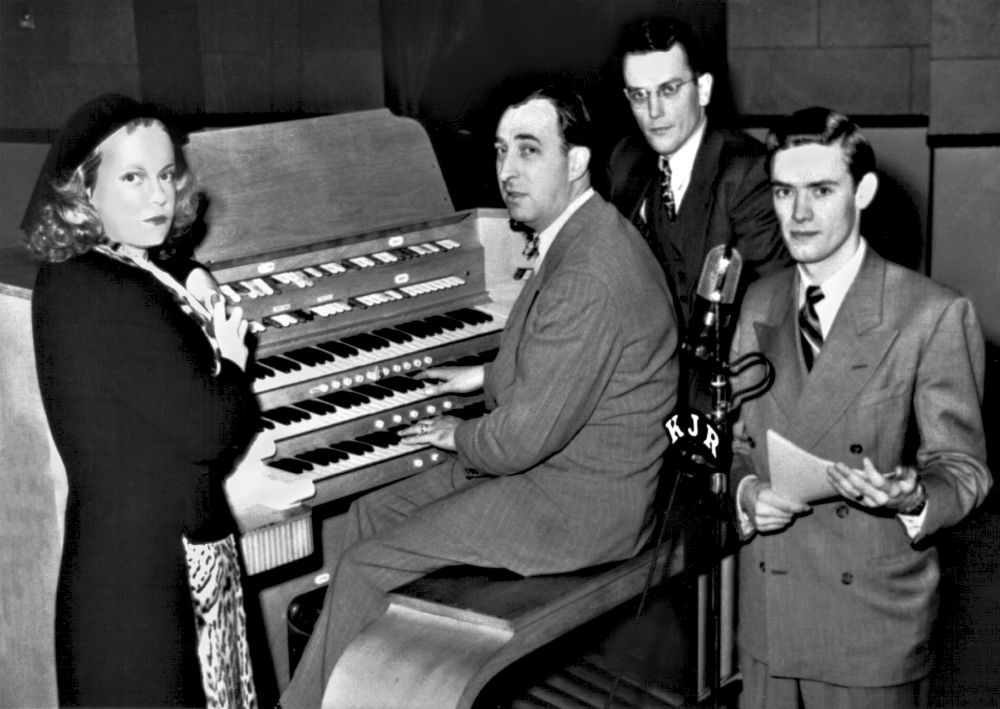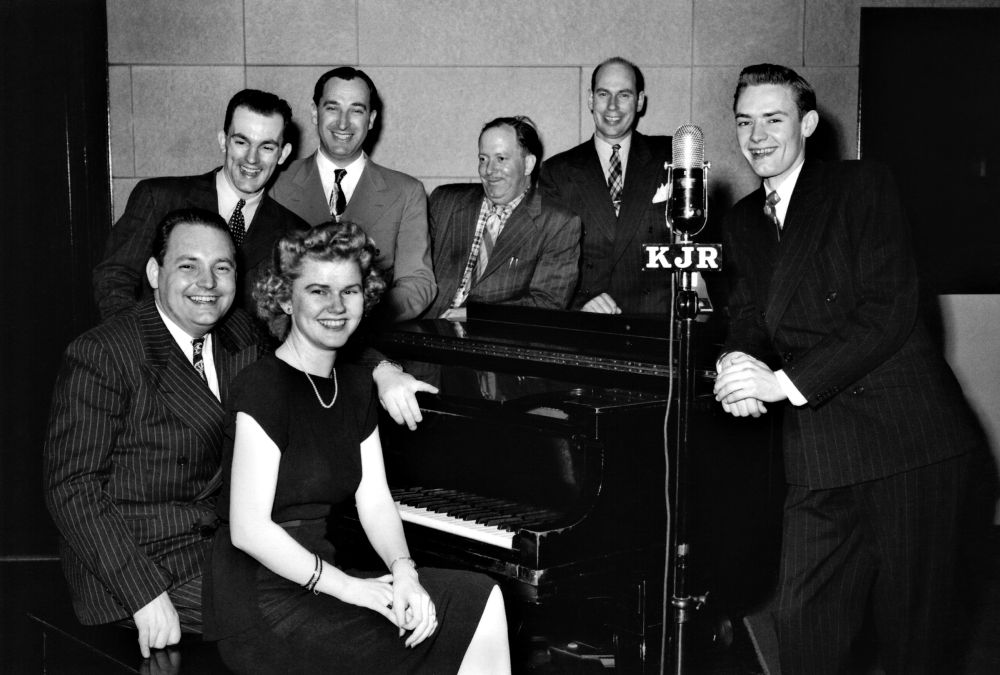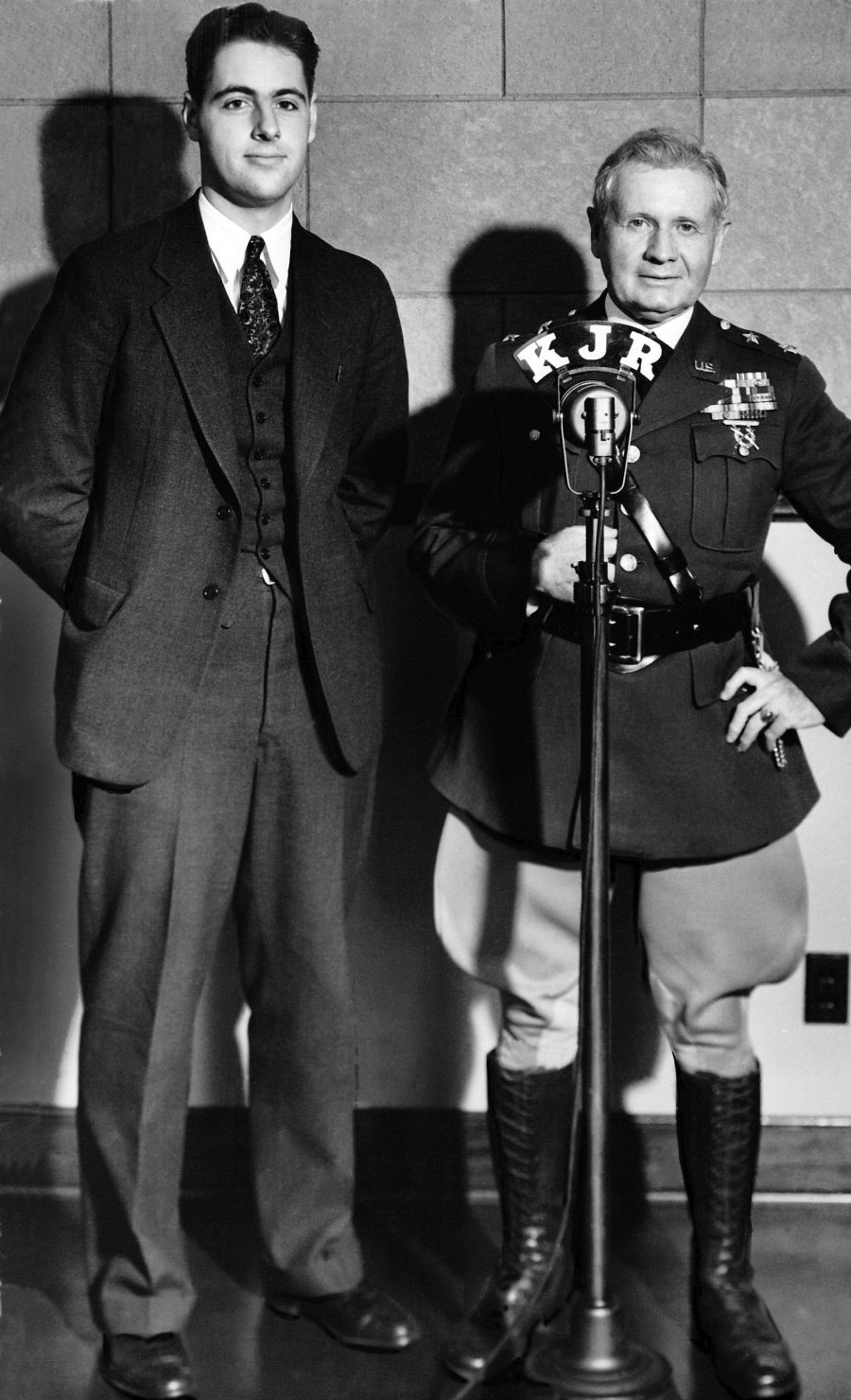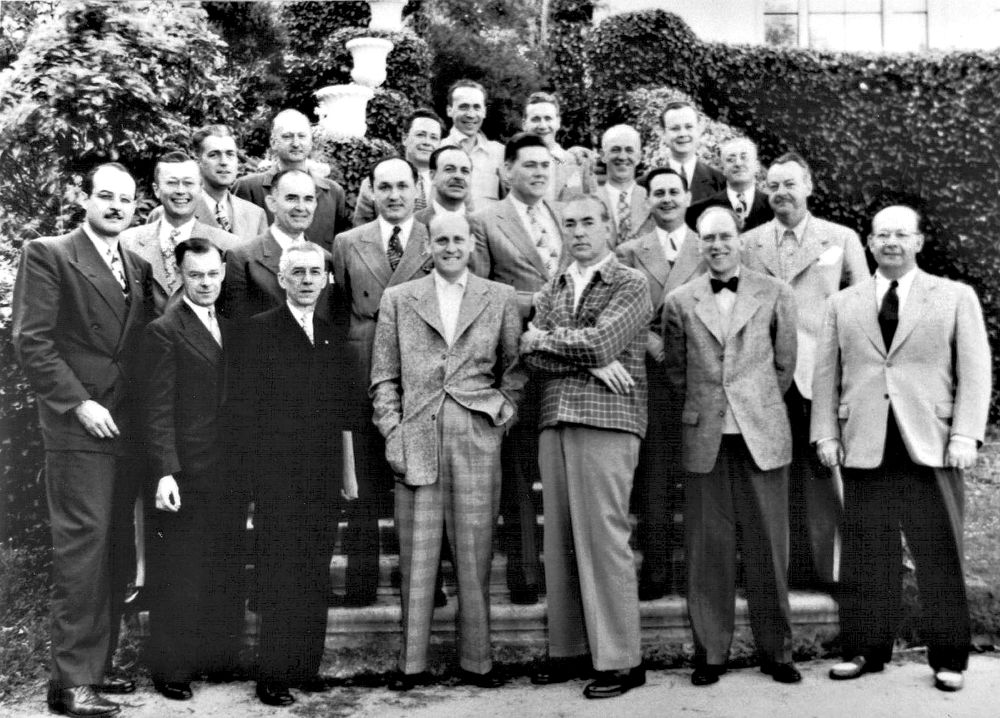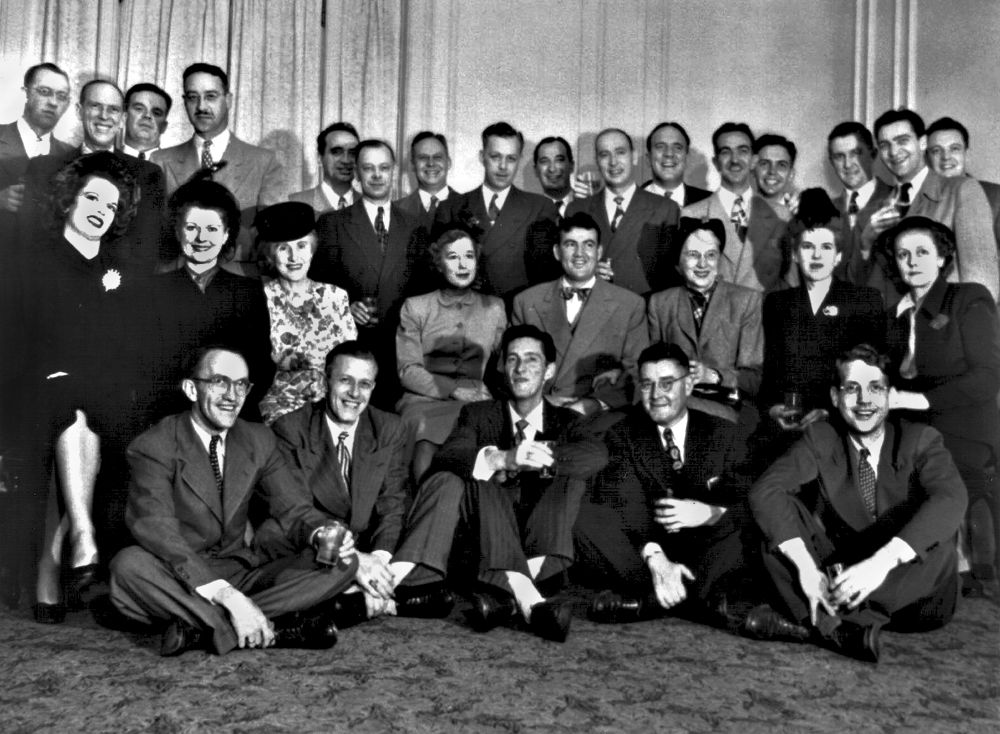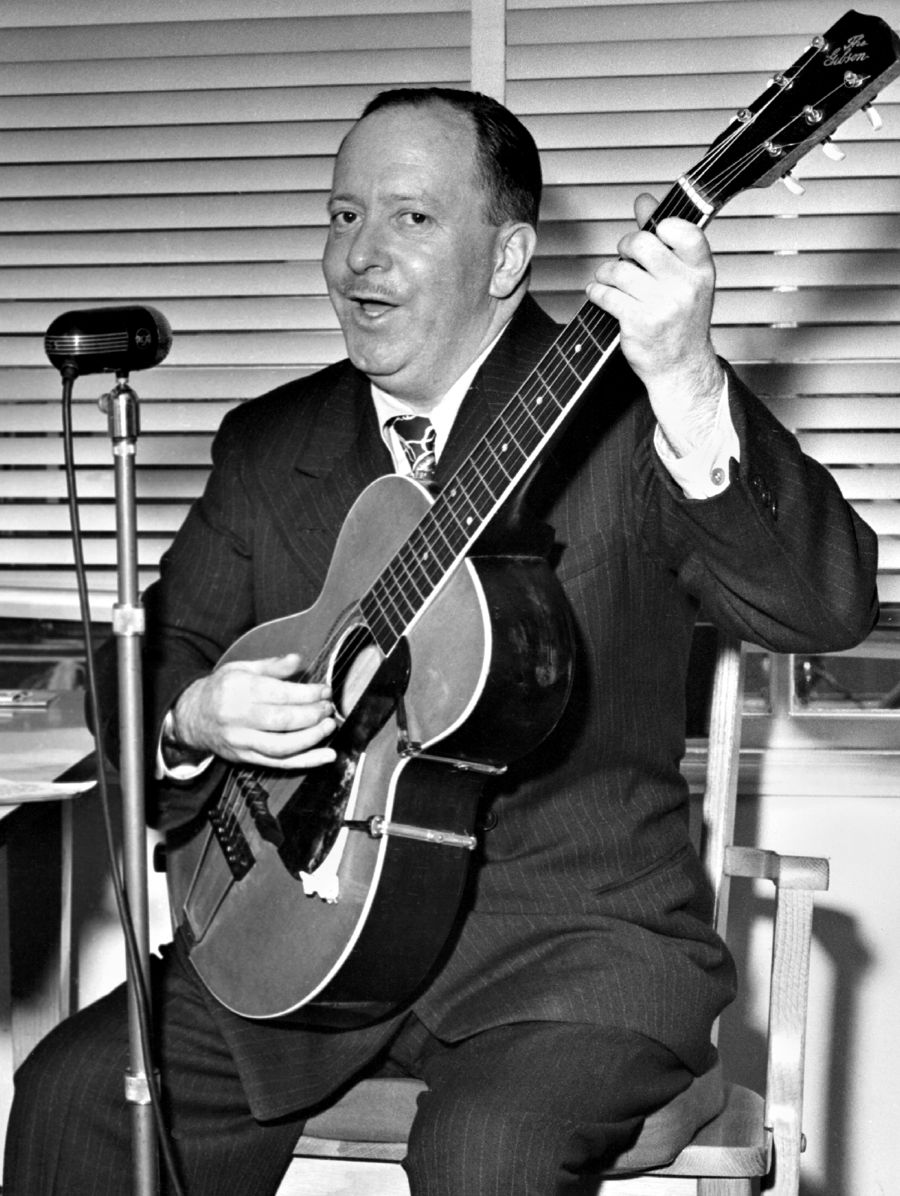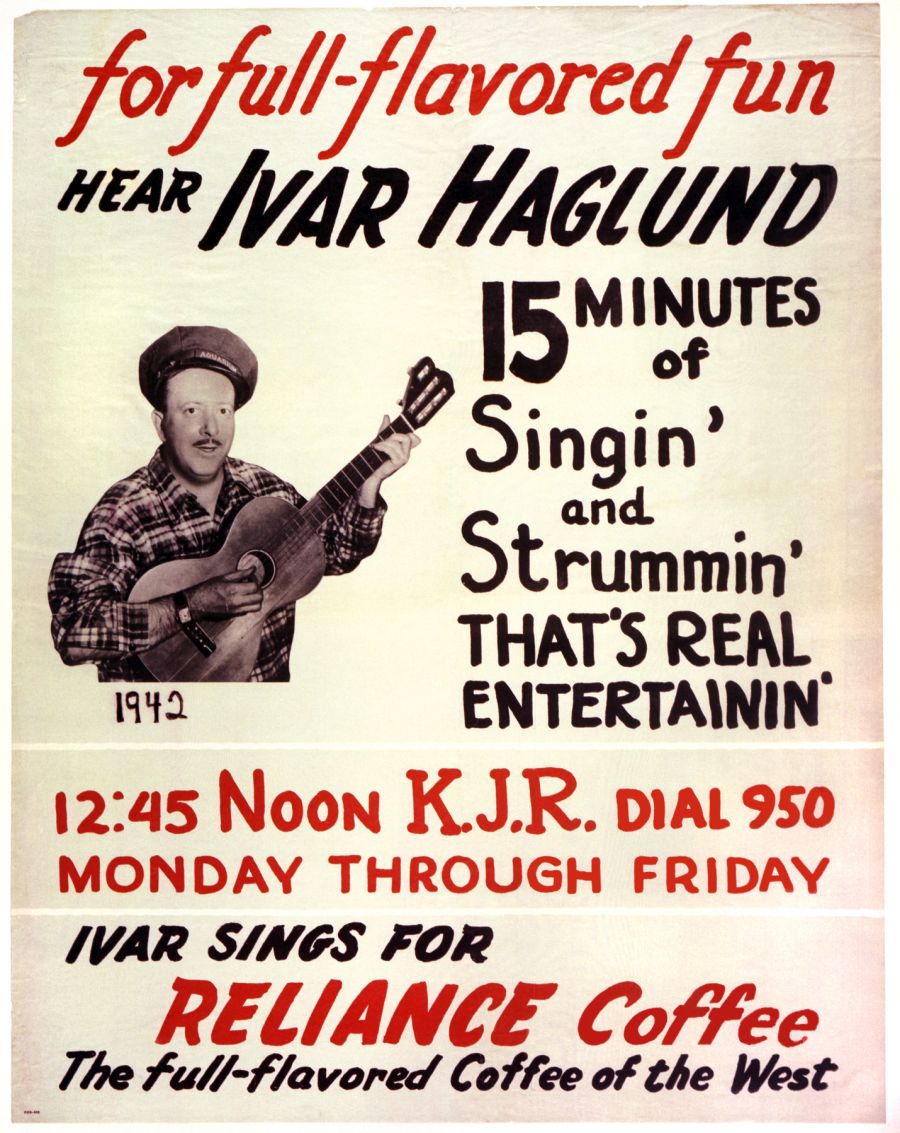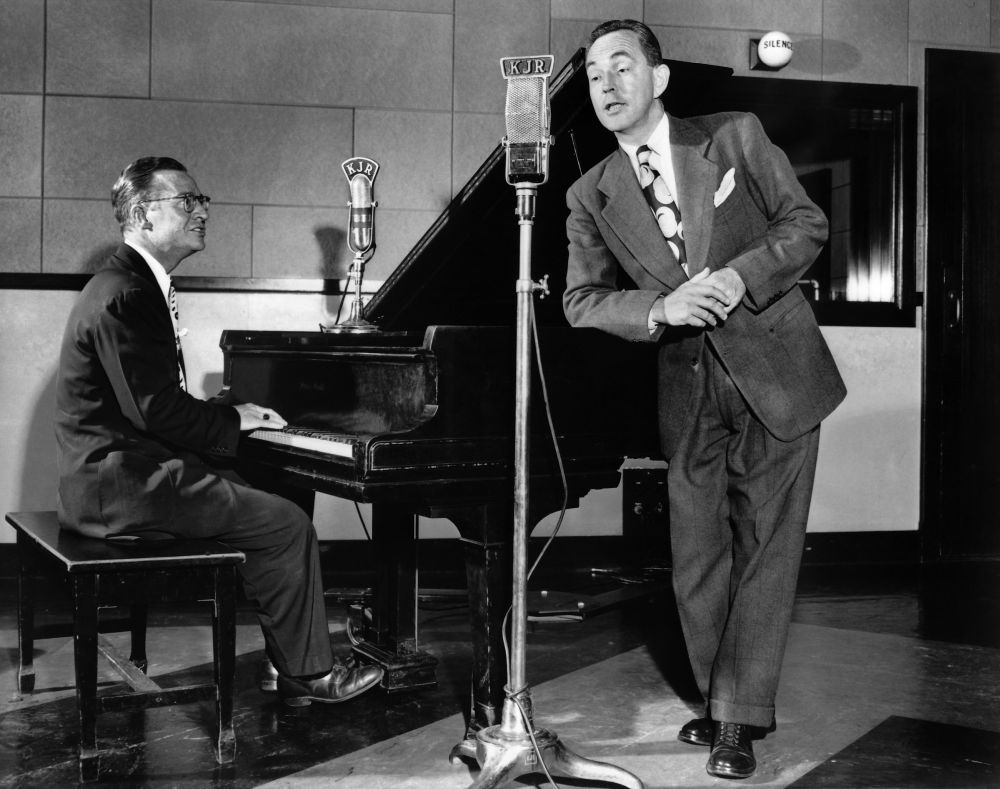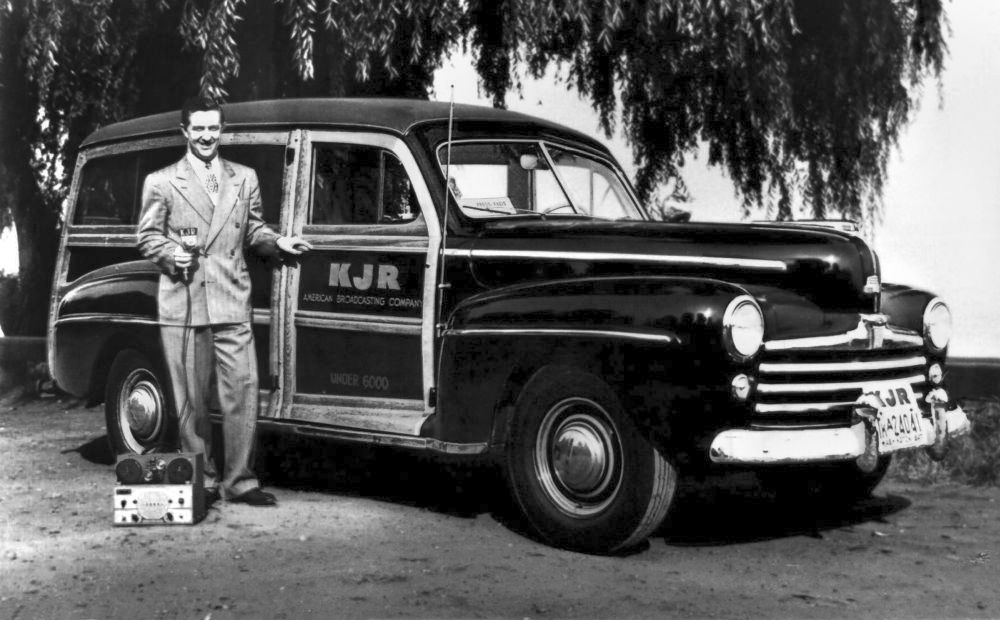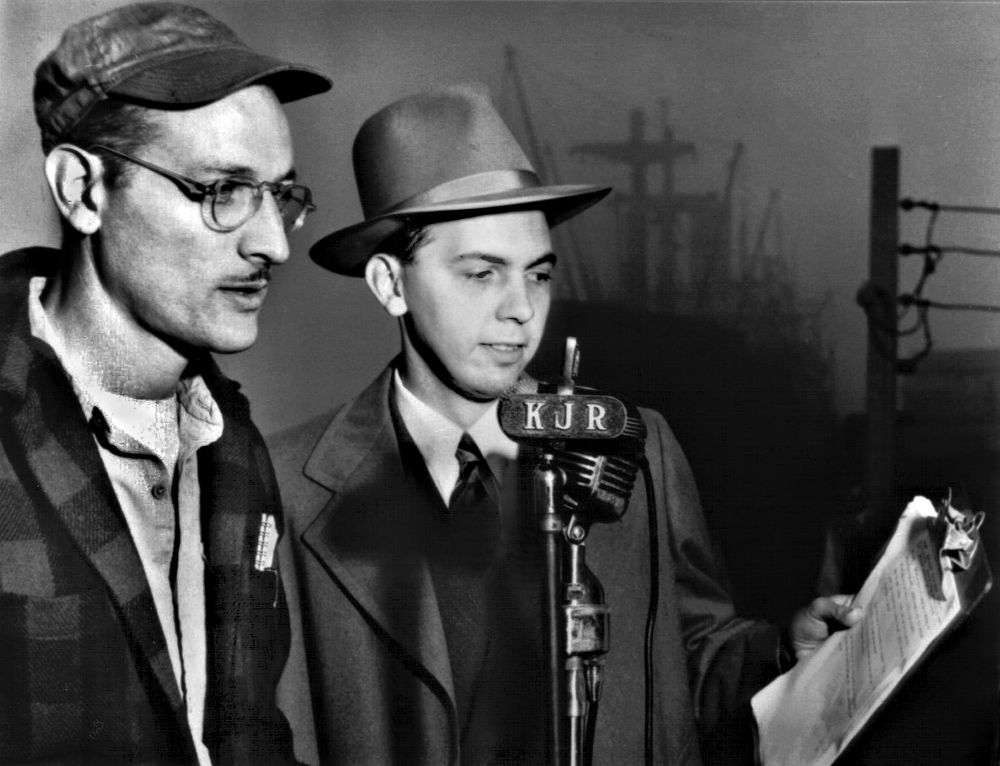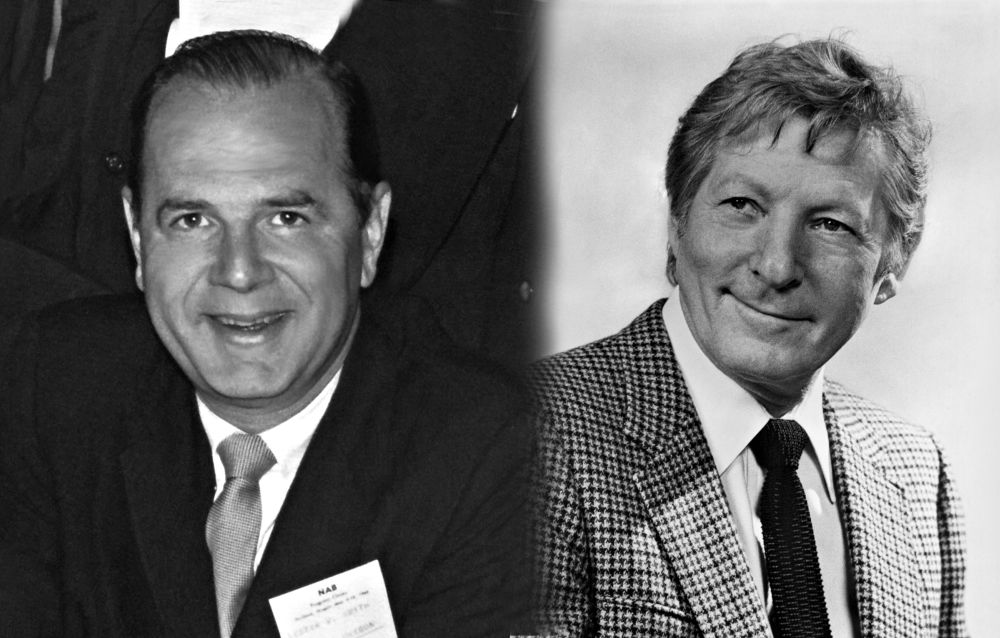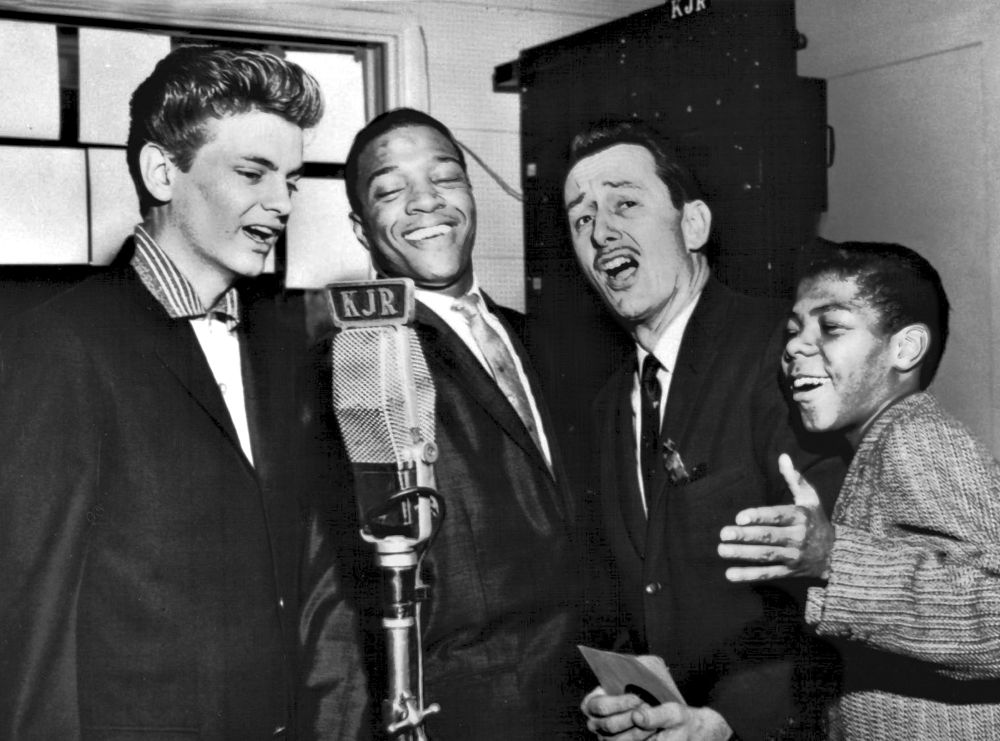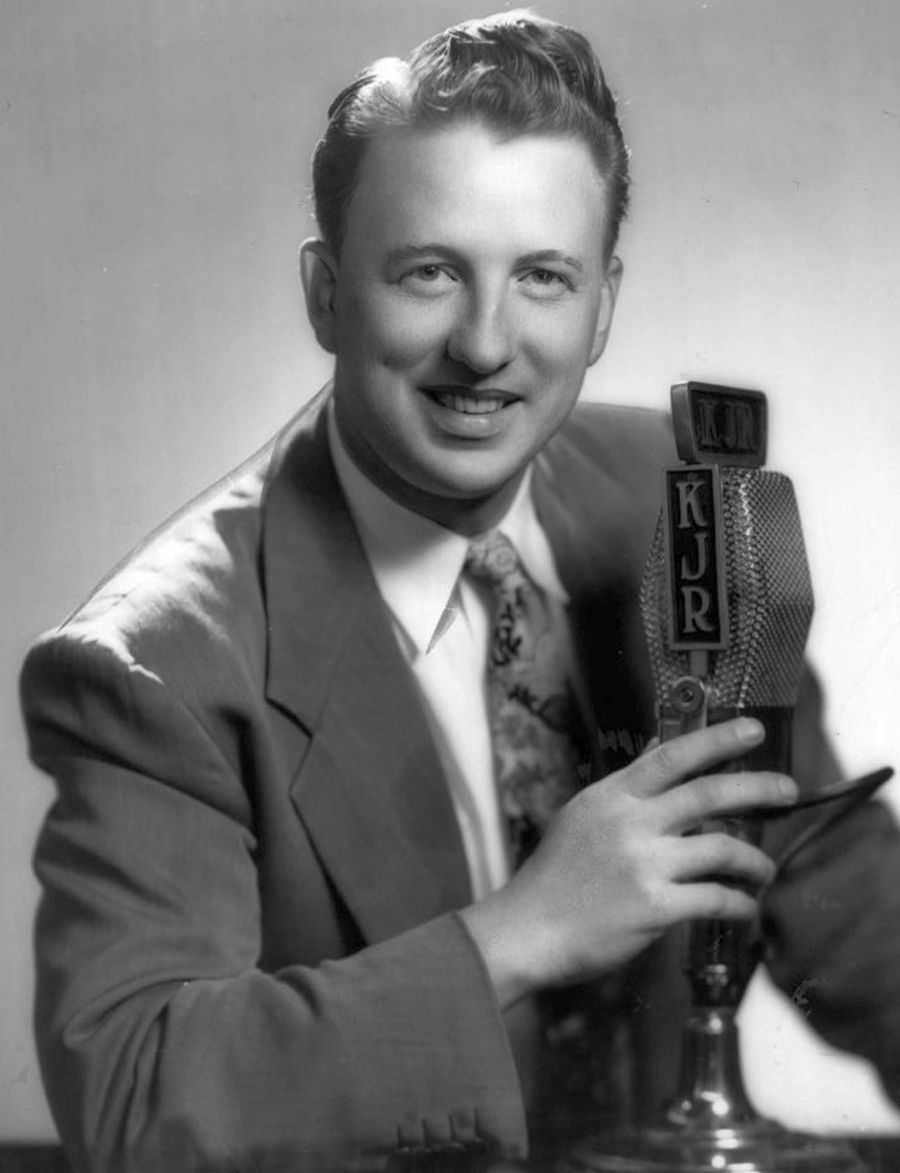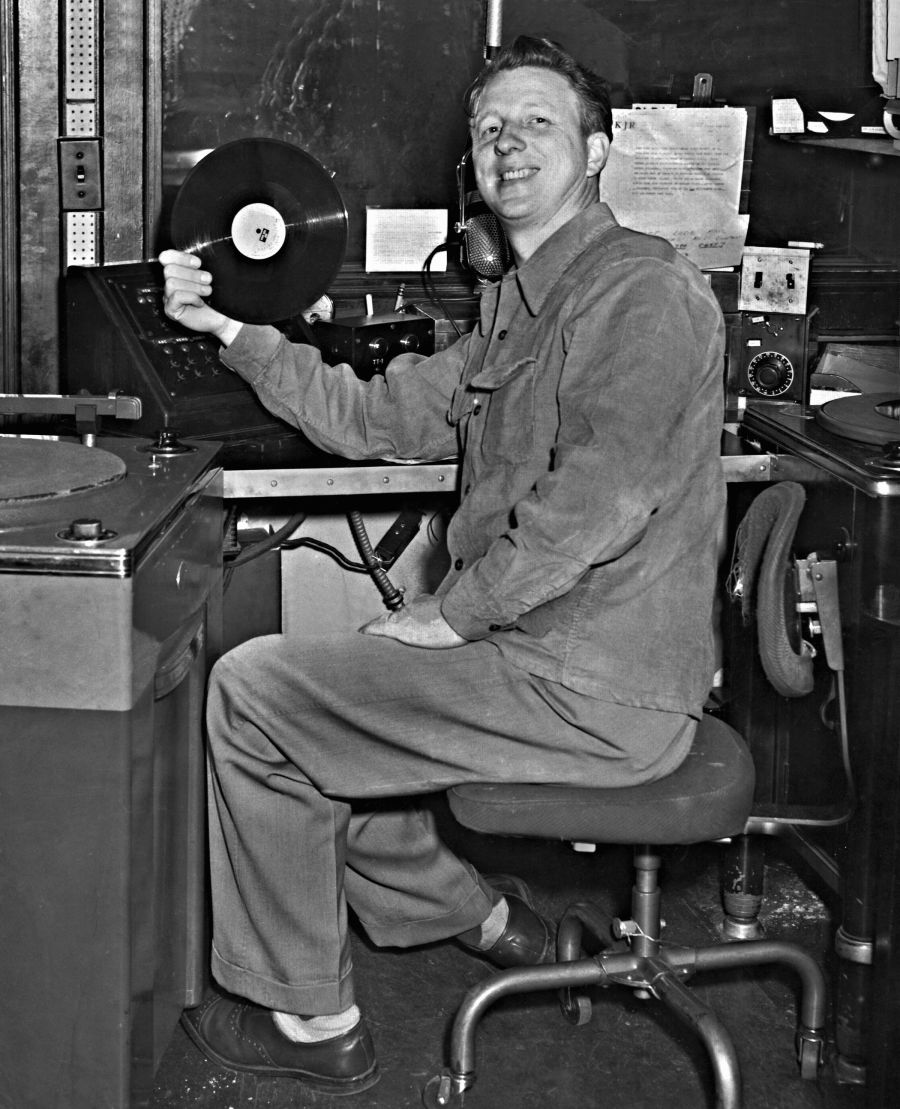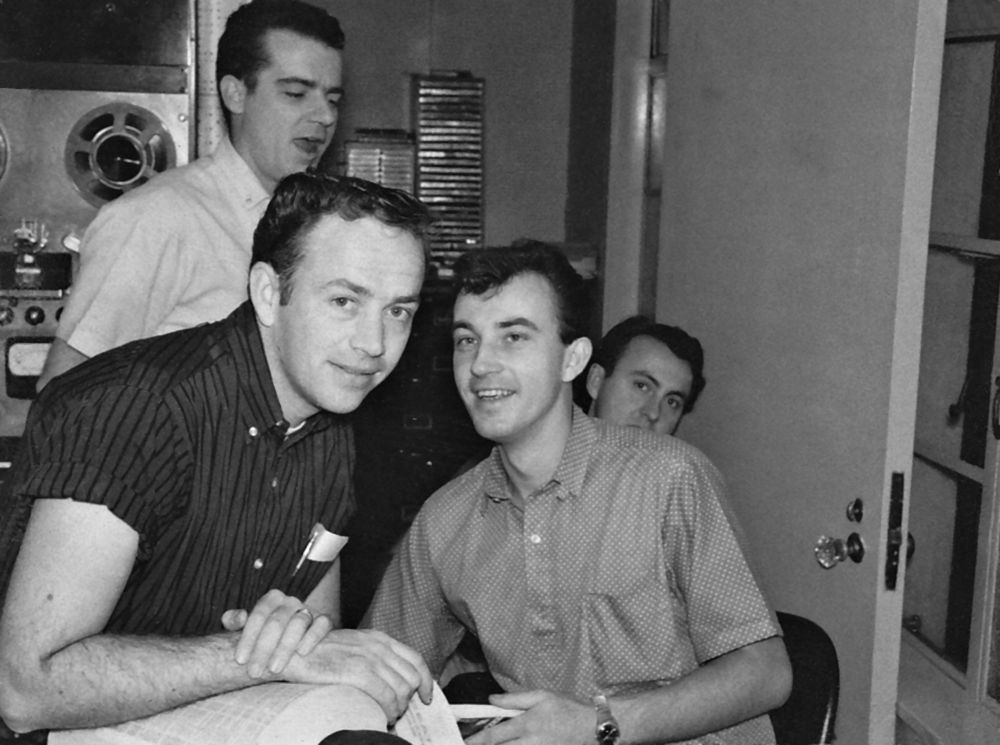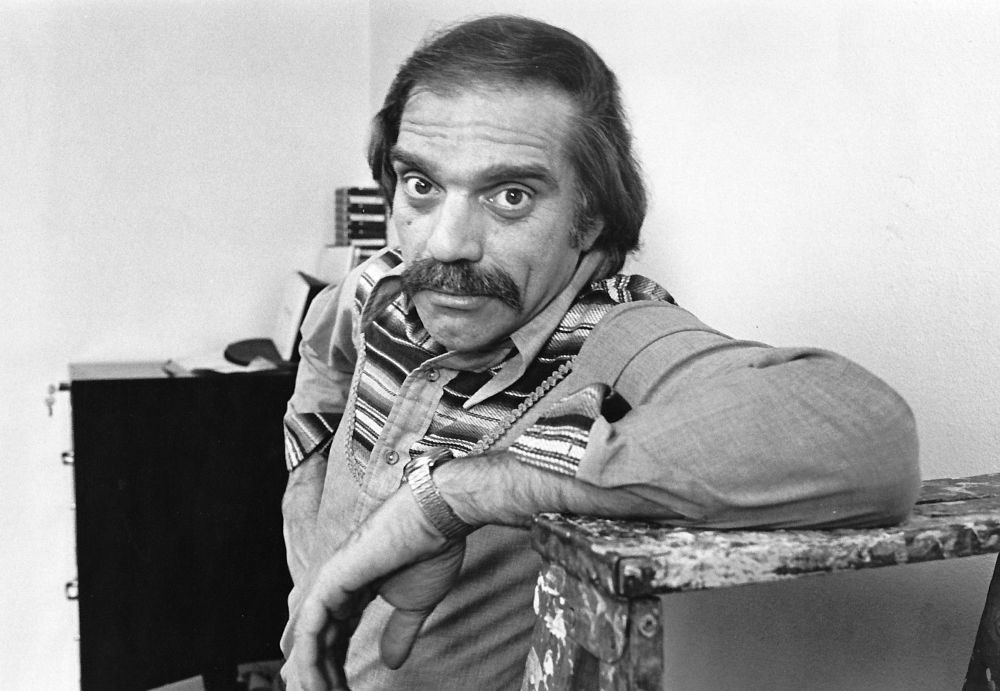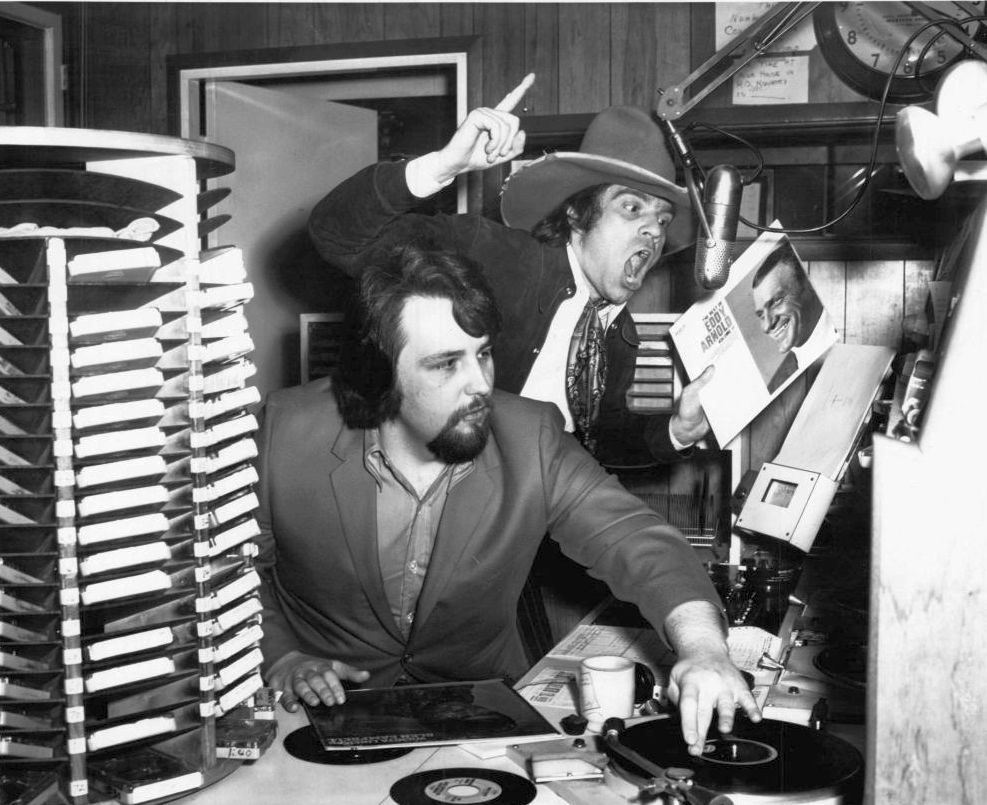Vincent Kraft operated Seattle’s first station from his Ravenna home starting in 1919, using the experimental call sign 7XC. Kraft broadcast phonograph records and piano music, and sometimes featured a neighbor child playing the violin. 7XC was relicensed as KJR in 1921. Kraft built three other stations– KYA, San Francisco, KEX in Portland, and KGA in Spokane -- and tied them together in 1926 to create one of the first regional networks.
In 1928, Kraft sold all four stations to Adolph F. Linden, co-owner with Edmund Campbell of the ritzy new Camlin Hotel. Both men were also directors of Puget Sound Savings and Loan. KJR immediately became one of the most popular and best-financed radio stations in the Northwest. It had a large program staff, including announcers, singers, a dance band and a symphony orchestra.
Linden expanded Kraft's network, adding affiliate stations across the West. The new 14-station network was called the American Broadcasting Company (unrelated to today’s ABC network). An agreement with the Columbia network (CBS) extended the programs of both networks nationwide.
In 1928, it was found that Linden and Campbell had been siphoning off their bank's money to run the station and their hotel. Linden resigned his position as president of the bank – only to be replaced by Campbell. Then in August, 1929, the Savings and Loan filed for bankruptcy and the money flowing to KJR stopped abruptly. The network lines were shut down for non-payment. Most of KJR’s staff and musicians left when their paychecks stopped. Linden and Campbell were charged with defrauding shareholders and depositors, and each received fifteen years in the Walla Walla State Penitentiary.
In 1930, NBC purchased the four Linden station - KJR, KEX, KGA and KYA. They became part of an NBC hookup called the Gold Network until depression budget cuts discontinued the itin 1933. NBC then leased each of the stations to its local NBC affiliate for $1 a year, bringing KJR under the operation of Fisher Blend's KOMO. The two stations moved into new studios in Skinner Building in 1934. KJR was programmed locally until 1936, when it became an NBC Blue Network affiliate. KOMO purchased KJR outright in 1941.
Then in 1944, the FCC enacted its “duopoly” rule, prohibited the ownership of two stations in a single community. In 1945, KOMO divested of KJR through a stock swap, and KJR'S manager Birt Fisher ended up as its owner. Fisher sold KJR to Marshall Field Enterprises in 1947, who in turn sold to Mt. Rainier Radio and Television Broadcasting Corp. in 1952.
In 1954 Lester Smith and John Malloy bought KJR for a reported $150,000. Smith changed KJR to a Top 40 format, hiring popular disc jockeys such as Dick Stokke, Pat O’Day, Larry Lujack, Lan Roberts, and Lee Perkins. KJR shot to number one and enjoyed almost a 40% local audience share for a decade.
(From the book "Seattle Radio" by John Schneider, 2013.
Vincent Kraft was Seattle’s first broadcaster. He played phonograph records over his amateur station 7XC starting in 1919, and broadcast the results of the Dempsey-Carpentier fight in 1920. Kraft’s little station soon became KJR, and he later built stations in Portland, Spokane and San Francisco.
Vincent Kraft started transmitting over 7XC in 1919 from the garage of this modest Seattle home at 6838 19th Ave NE. He broadcast phonograph concerts for 45 minutes each evening from his ten watt de Forest transmitter.
This was the original microphone used by Vincent Kraft for his 7XC broadcasts in 1919. Called the "Wonderphone", it was originally developed for use with the Dubilier wireless telephone, an early modulated arc transmitter.
In 1924, KJR moved into the ten-story Terminal Sales Building at 1932 First Avenue in Belltown. Opened in 1923, the building served as a sales and display center for distributors doing business with nearby retailers like Frederick and Nelson and the Bon Marché
By 1924, KJR had become a serious radio operation, and so Vincent Kraft set up this studio on the sixth floor of the Terminal Sales Building. Here is the main studio, lined with acoustic draperies and having separate isolation booths for the announcer and operator. (MOHAI photo)
A KJR announcer sits at the studio desk in the Terminal Sales Building. He uses the control panel in front of him to turn on his microphone, and to signal the transmitter operator. The Western Electric carbon microphone on the desk was the classic studio microphone used by most stations in the 1920s. (MOHAI photo)
This was KJR’s 1,000 watt transmitter on the tenth floor of the Terminal Sales Building. It was custom made for the station by Vincent Kraft’s Northwest Service Company. The antenna stretched from the back of the building over to the top of the St. Regis Hotel.
Kraft tied his three Northwest stations together with phone lines to create the Northwest Broadcasting System, one of the country's first regional networks.
In 1927, KJR moved to the Home Savings Building at 1520 Westlake Avenue. Formerly the American Hotel, it had recently been remodeled and reopened as prime office space on the five-corner intersection of Westlake, Fourth and Pine. In this 1925 view from the Medical Dental Building, the Home Savings Building is visible in the center.
A KJR pianist, probably Mabel Mohrajan, is seen performing in Studio B in the Home Savings Building, about 1928. The studio was hung in heavy draperies for control of acoustics, but it also had the comfortable appointments of a 1920s living room to help put nervous performers at ease. (MOHAI photo)
Concurrent with the move to the Home Savings Building in 1927, KJR moved its transmitter to 15th Avenue NE and NE 185th Street in Lake Forest Park, Two self-supporting towers supported the characteristic flat-top “T” wire antenna of the era.
This attractive brick building housed the KJR transmitter in Lake Forest Park. Kraft built an identical installation for his station KGA in Spokane.
KJR operated from the Lake Forest Park site until 1937, when it moved to the combined KOMO/KJR tower in West Seattle. The former site is now the location of St. Mark Catholic Church.
This was KJR’s new transmitter near Lake Forest Park in 1927. Chief engineer Clarence Clark is standing, while chief operator Mr. Fesidnor is seated. KJR initially operated this transmitter at 2,500 watts, but the power was later raised to 5,000 watts.
Clark is showing the station's new transmitter to Victor Rivers, 1927, pointing to the transmitter’s final amplifier tubes. Separate audio cabinets with their modulator tubes are to the left in this image, and the monitor speaker and modulation monitor are on top of the cabinets.
KJR’s Chief Engineer Clarence Clark is seen in the master control room in the Home Savings Building. Clark started with KJR in 1926 and supervised the company's transmitter installations in Seattle, Portland and Spokane.
Adolph Linden and Edmund Campbell purchased KJR in 1928 and connected with other stations to form the ABC Western Network. They were also directors of the Puget Sound Savings and Loan, financing their radio operations with “borrowed” bank money. When the bank declared bankruptcy in 1929, the two men were sentenced to fifteen years at the state penitentiary.
These were the American Broadcasting Company's stations in 1929. Programs originated on alternate nights from KJR Seattle and KYA San Francisco. In January the network was extended to Salt Lake City, Denver, Omaha and Chicago where it connected with the Columbia Broadcasting System. ABC and CBS established a reciprocal program exchange, which brought Seattle programs to the East coast.
Vic Meyers and his ten-piece orchestra recorded for Brunswick Records, and performed at the Butler Hotel and the Trianon Ballroom, Seattle's leading dance salons during the prohibition years. They were heard from 6-7 PM and 10-12 PM daily on KJR and the ABC network during 1929.
The Gauchos were a musical group that performed on KJR. Here they are in Studio B, about 1931-32. Two microphones are suspended from the ceiling, with the studio operator in the background. Some KJR programs employed a musician in the control room who followed the musical score and told the operator when to adjust the volume.
Bob Nichols started as a singer on the P-I station KFC in 1921. By 1927, he was KJR’s sports director and doing some of Seattle’s first play-by-play broadcasts.
Murray Bolen (right) was an announcer at KFI in Los Angeles in 1928. He put together vaudeville music and comedy act with Brown and they came north to Seattle. The team was heard on KJR and the ABC network until it went bankrupt, then moved to KFRC in San Francisco.
Serious music was also an important part of KJR’s programming. The 20-piece American Salon Orchestra broadcast daily on KJR and the American Broadcasting Company, directed by Italian-born pianist Francesco Longo. He came to Seattle from New York, where he had been director of the Manhattan Opera Company.
In 1928, Adolph Linden brought Meredith Willson to Seattle to be ABC’s music director. For his planned 1929 summer concert broadcasts, he sent Willson to New York to hire musicians for a 20-week engagement in Seattle. But when finances collapsed, the musicians went home being owed over $100,000. Willson moved to KFRC in San Francisco and went on to a big future in radio and motion pictures.
Adolph Linden spared no expense to bring the country’s finest musicians to Seattle for KJR’s summer concert broadcasts in 1929, such as the Mischakoff Quartet. But the mounting costs finally brought down Linden’s financial house of cards, and many musicians left Seattle without being paid.
British-born announcer Thomas Freebairn-Smith was the studio director for KJR and the ABC network. When the station went bankrupt, he pleaded on the air for help and managed to get an old upright piano donated by a listener. He was later an announcer at KNX in Los Angeles, where he was heard on some CBS programs.
The biggest program on KJR during the NBS years was the "Mardi Gras Gang", a live 90-minute variety show heard in 1931. The cast was mostly drawn from the station’s regular staff. It offered a variety of popular music mixed with skits featuring wacky comedic characters.
Grant Merrill, a popular pianist at KJR starting in 1928, was one member of the "Mardi Gras Gang" cast. By 1937 he had become the production director for KOMO and KJR and he remained with the stations through the forties.
Elmore Vincent first appeared on the Mardi Gras Gang program as the “Northwest Shanty Boy,” singing lumberjack songs in a tenor voice with yodel arrangements. He created a new comedy character for the program, the word-mangling “Senator Frankenstein Fishface”. It was an instant hit, and Vincent later took his character to network radio.
NBC purchased KJR out of bankruptcy in 1930 and it became an affiliate of the short-lived "Gold Network". In 1933, KOMO leased KJR from NBC for $1 a year and moved both stations into studios in the top two floors of the Skinner Building. The Fifth Avenue Theatre was on the ground floor, allowing for convenient broadcasts of live music from the theatre stage. (MOHAI photo)
This floor plan shows the layout of the Skinner Building studios. KOMO and KJR shared the four studios. Studios C and D were large enough for full orchestras or dramatic casts, but were mostly the source of piano performances and news programs. The Big A and B studios, used for live productions, floated on six inches of balsa wood to isolate them from any outside sounds.
In 1926 Birt Fisher and O.D. Fisher (not related) joined forces to open a new station, KOMO. Birt Fisher became the manager of the new station. KOMO leased KJR in 1933 and purchased it in 1941. When the FCC's duopoly rule forced the sale of KJR in 1945, Birt Fisher became its sole owner.
The FCC’s new duopoly rule prohibited the ownership of two stations in a single community, forcing KOMO and KJR to separate. This ceremony in November, 1945, marked the separation of the two stations. Birt Fisher became the 100% owner of KJR in a stock swap, with no money changing hands. (L-R) O. W. Fisher, president of KOMO; Marion Bush, his secretary; Jean Wylie, Birt Fisher’s secretary; and Birt R. Fisher.
This was the cast of "Narratives at Nine", a weekly quarter-hour program heard on KJR every Wednesday night at 9:00, sponsored by the University District Commercial Club. (L to R): Marge McPherson, script writer and co-producer; Eddie Clifford, organist; Dave Crockett, producer; and Jerry McCumber, narrator.
Here are some of the popular voices and musicians heard on KJR during the late 1940s. Seated: Tubby Clark, Martha Wright; Standing: Hal Sebenick, Eddie Clifford, Ivar Haglund, Bob Davies, Jerry McCumber (announcer). (MOHAI photo)
Willard Warren was the program director of the combined KOMO/KJR operation in 1935. Here is is seen interviewing Major General Paul B. Malone, head of the U.S. Fourth Army.
This KJR staff photo from an unknown event is dated 1946.
In 1947, the KJR staff numbered at least 29 persons, as seen in this Christmas party photo. That year, Birt Fisher sold KJR to Marshall Field Enterprises for $700,000 and retired to his Ellensburg ranch. Marshall Field III's holdings included KOIN AM/FM in Portland, WJJD in Chicago, and the Chicago Sun Times newspaper.
Ivar Haglund opened Seattle's first aquarium in 1938 and his first "Acres of Clams" restaurant in 1946. He was an expert on Northwest folk music and could sing more than 200 songs from memory. His radio career was launched in 1940, when he answered an emergency call to fill in for a guest who had canceled.
This poster promoted Ivar Hagland's daily program on KJR in 1942. He was a regular featured singer on KJR, KIRO and later on the J.P. Patches show on KOMO-TV.
The "Heidelberg Harmonaires" performed on KJR for eight years beginning in 1949, sponsored by Heidelberg Brewing Co. Claude Raye (piano) and Scott O'Dare (vocal) were heard three to five nights a week on 31 radio stations in Washington, Oregon, Idaho and Alaska. (Tacoma Library photo)
Here is reporter Bob Ferris in 1947 with a KJR news vehicle and an early Boosey & Hawkes wire recorder. The wire recorder was the first magnetic recording device available, preceding audio tape recording. The news car is the iconic 1947 Ford Super Deluxe Woody wagon.
KJR reporter Charles Herring interviews Bryon Fish from the Seattle Times during the 1947 Salmon Derby. After serving in World War II, Herring was hired by KJR and was a staff announcer for five years. In 1951 he joined KING-TV and became Seattle's first television news reporter.
Lester Smith bought KJR in 1954, and later joined with actor Danny Kaye to form Kaye-Smith Enterprises, also operating KXL in Portland and KNEW (later KJRB) in Spokane. Smith changed KJR to a Top 40 format, making it the number one Seattle station for the next decade.
Dick Stokke, a popular KJR disk jockey in the 1950s, was known for his ad-libbed, irreverent comments. Here he belts out a tune with Rock and Roll celebrities Phil Everly (Left), Clyde McPhatter (Second Left), and Frankie Lymon (right).
Wally Nelskog started his “Wally’s Music Makers” program on KRSC in 1950, and it soon became the number one program in its afternoon time slot. In 1955, he moved himself, the show and “all of the audience” to KJR, where he achieved an unprecedented 50% audience share.
Here is Wally Nelskog in the KJR studio during one of his "Music Makers" programs. Nelskog went on to buy and sell ten radio stations during his career, culminating in the ownership of 50,000-watt KIXI in Seattle.
Dick Curtis was one of KJR'S popular disk jockeys from 1960 to 67, where he worked alongside Program Director Pat O'Day, Lan Roberts, Larry Lujack, Tom Murphy and other radio stars. In 1967 he was named program manager of KOL, and later became its general manager. (L-R) Lee Perkins, Pat O'Day, Curtis and Jerry Kaye in the KJR production room, about 1962.
Lan Roberts was KJR's most creative air personality during its Top 40 era. Pat O'Day said of him, "he had a childlike imagination that was a thing of beauty. He wanted radio to go beyond the mundane. He wanted to make people laugh every hour." Coming to Seattle from New Orleans, he was heard on KJR from 1962 to 1968, and then at KOL for two years before returning to KJR from 1970-73.
On April 1, 1970, as an April Fool’s joke, Top 40 KOL and Country KAYO swapped their drive time disc jockeys for a day. Here are KJR's Lan Roberts and Robert O. Smith in the KAYO studio. Meanwhile, KJR's Pat O'Day and Tom Murphy traded places with Jack Morton at KVI.
